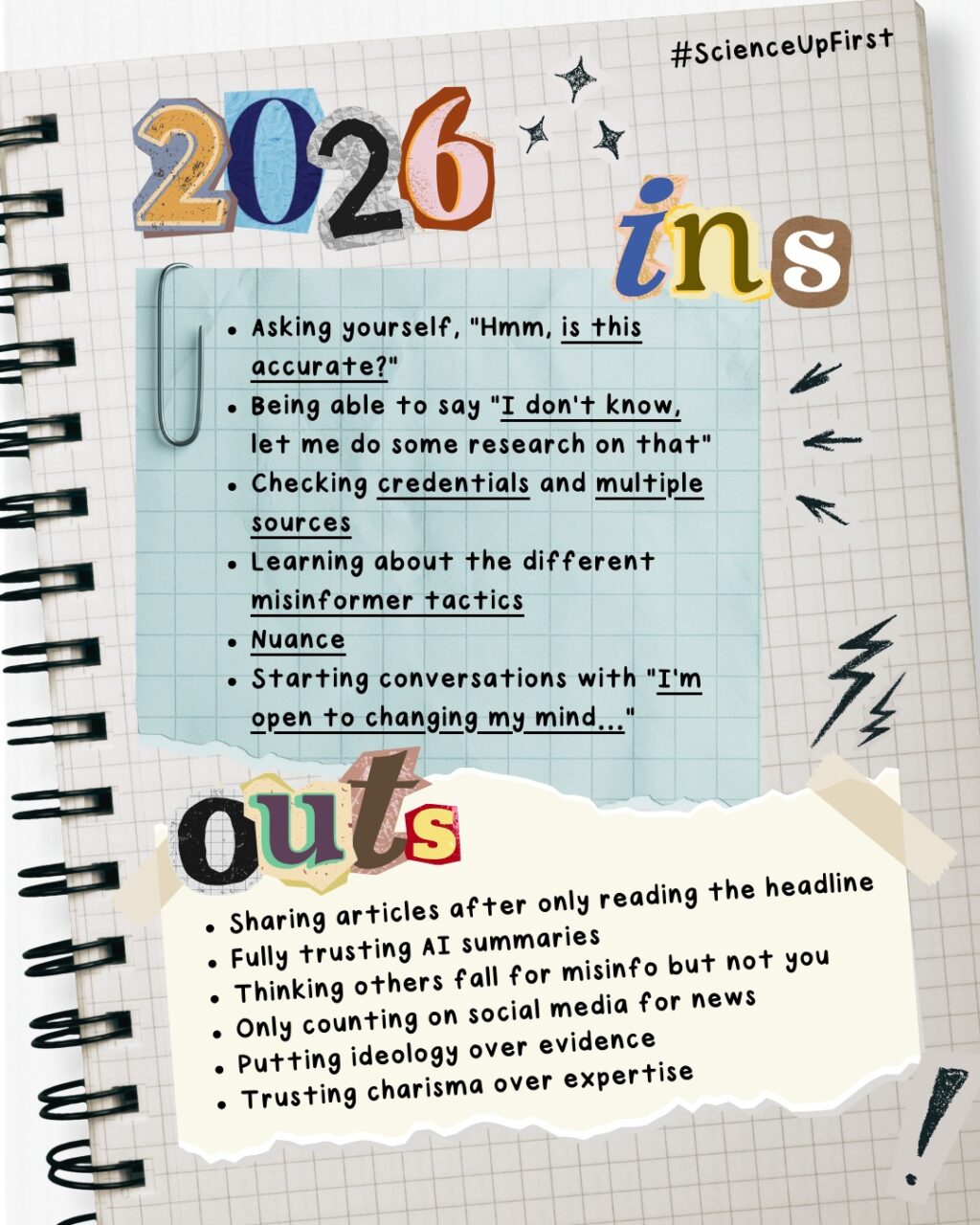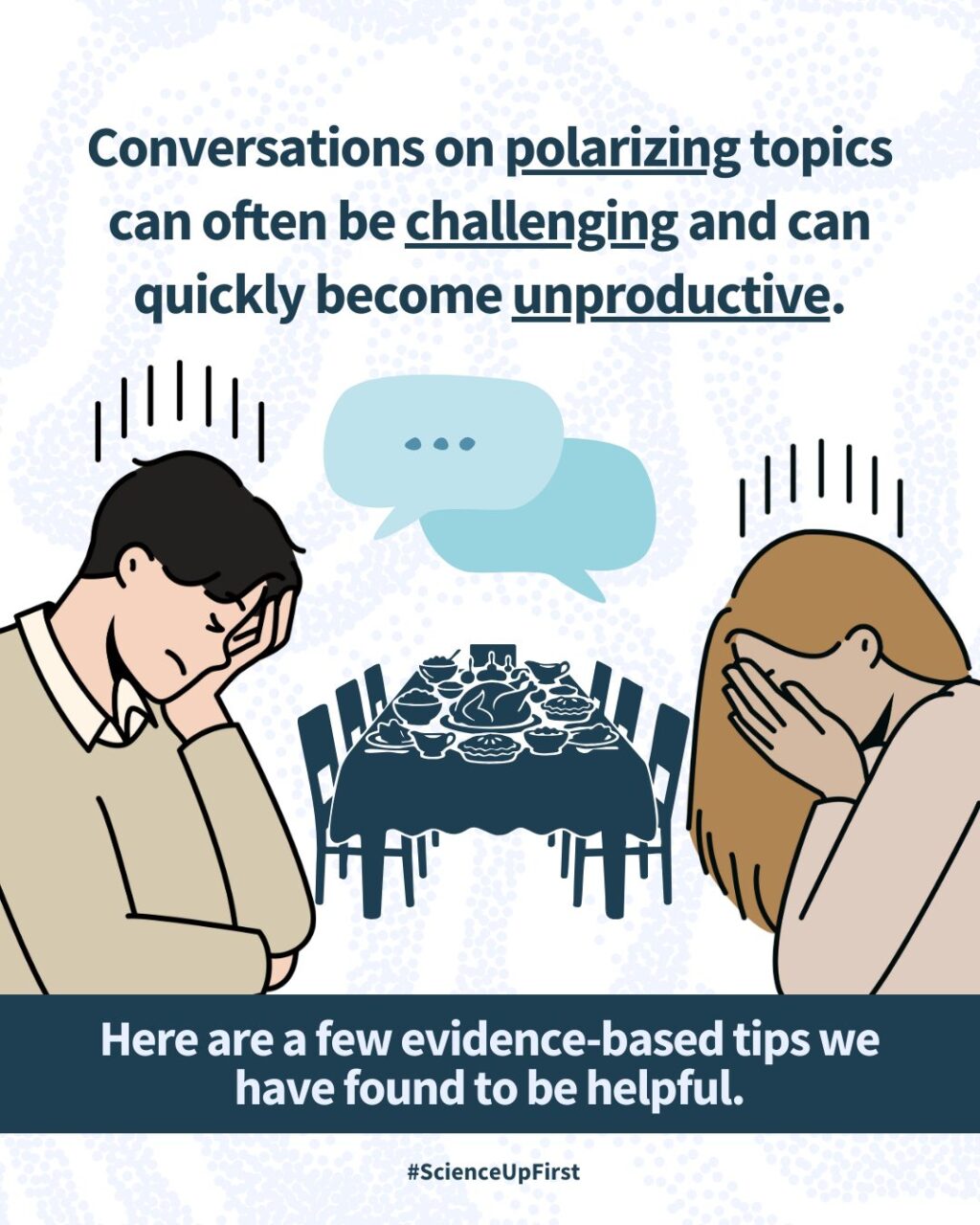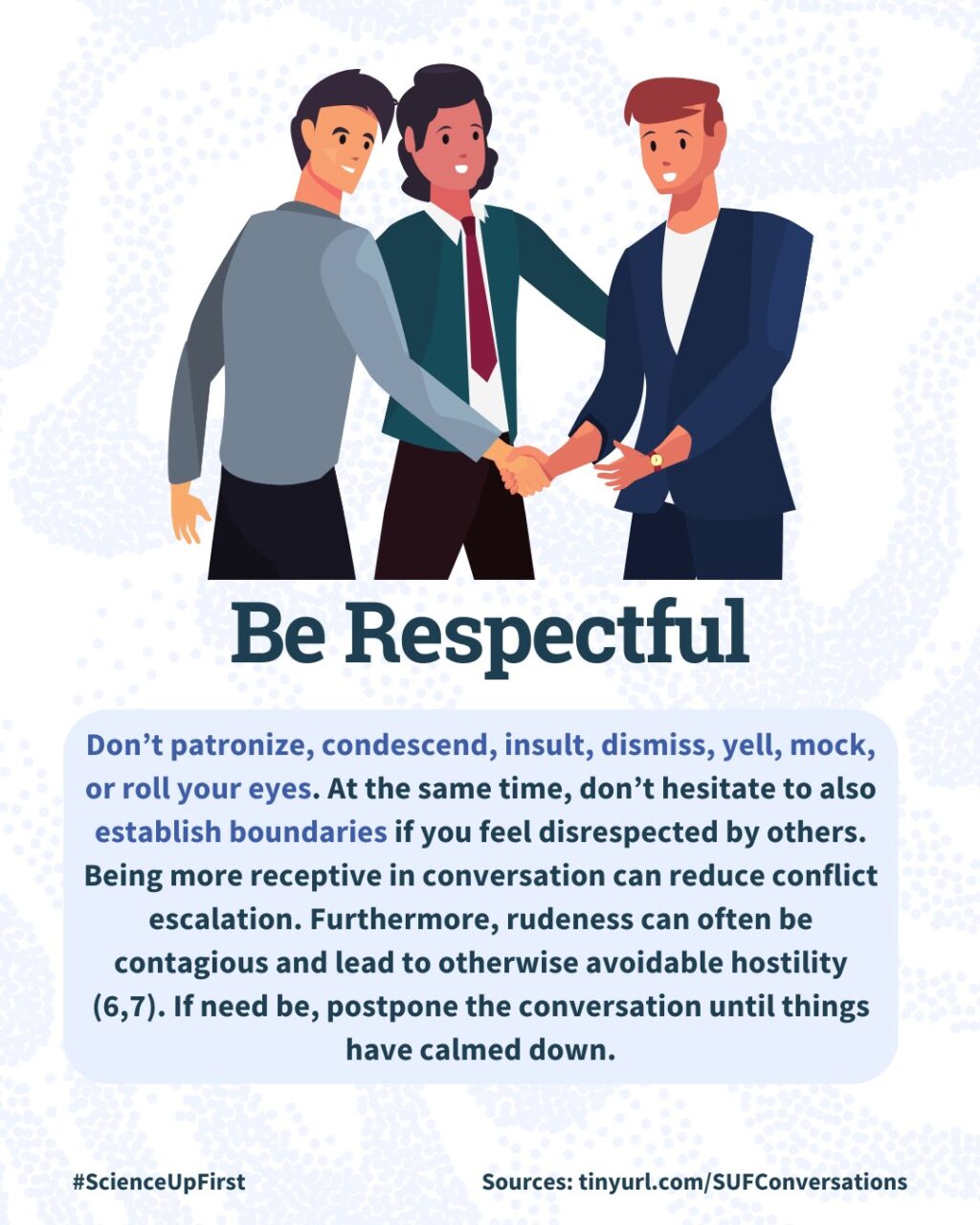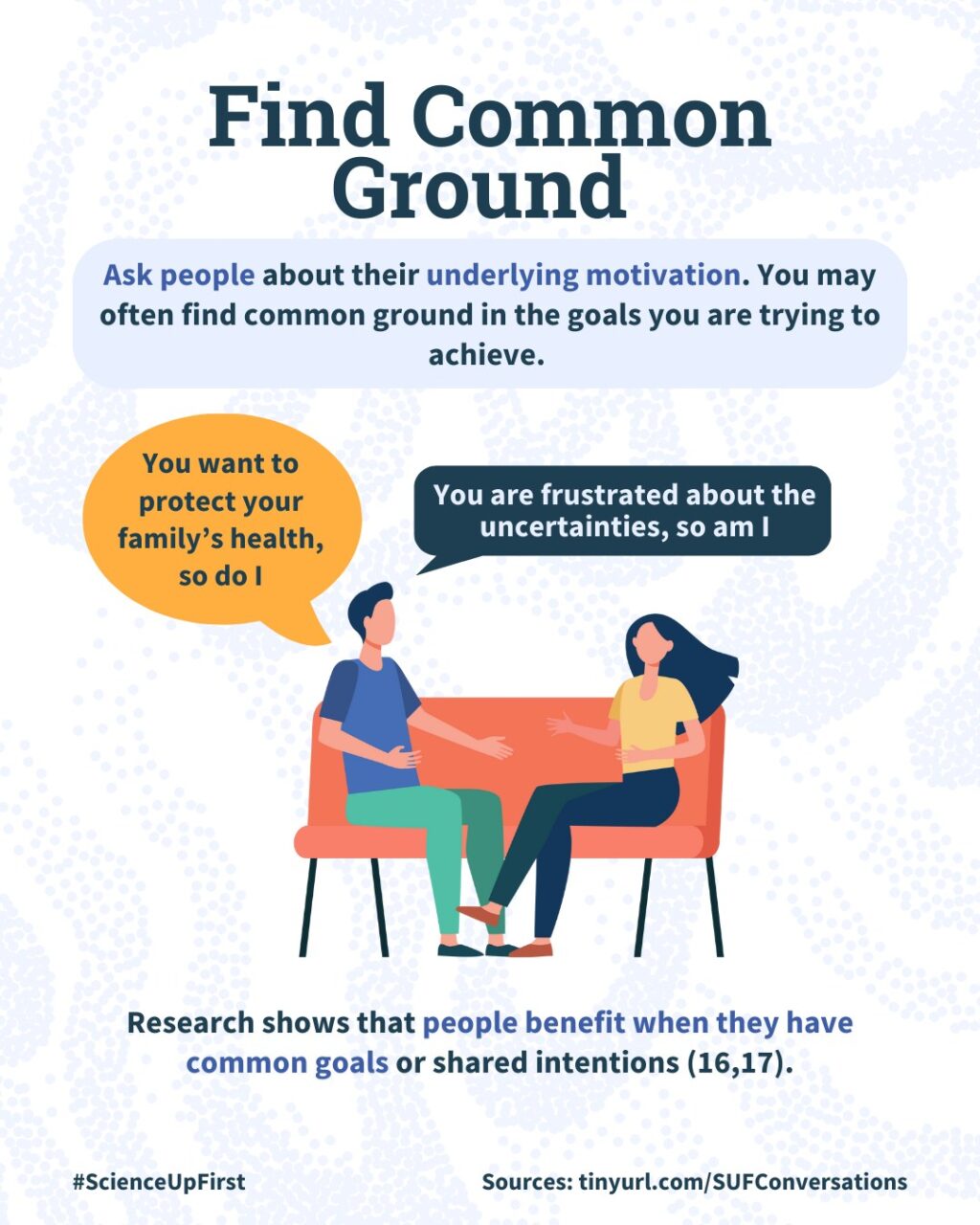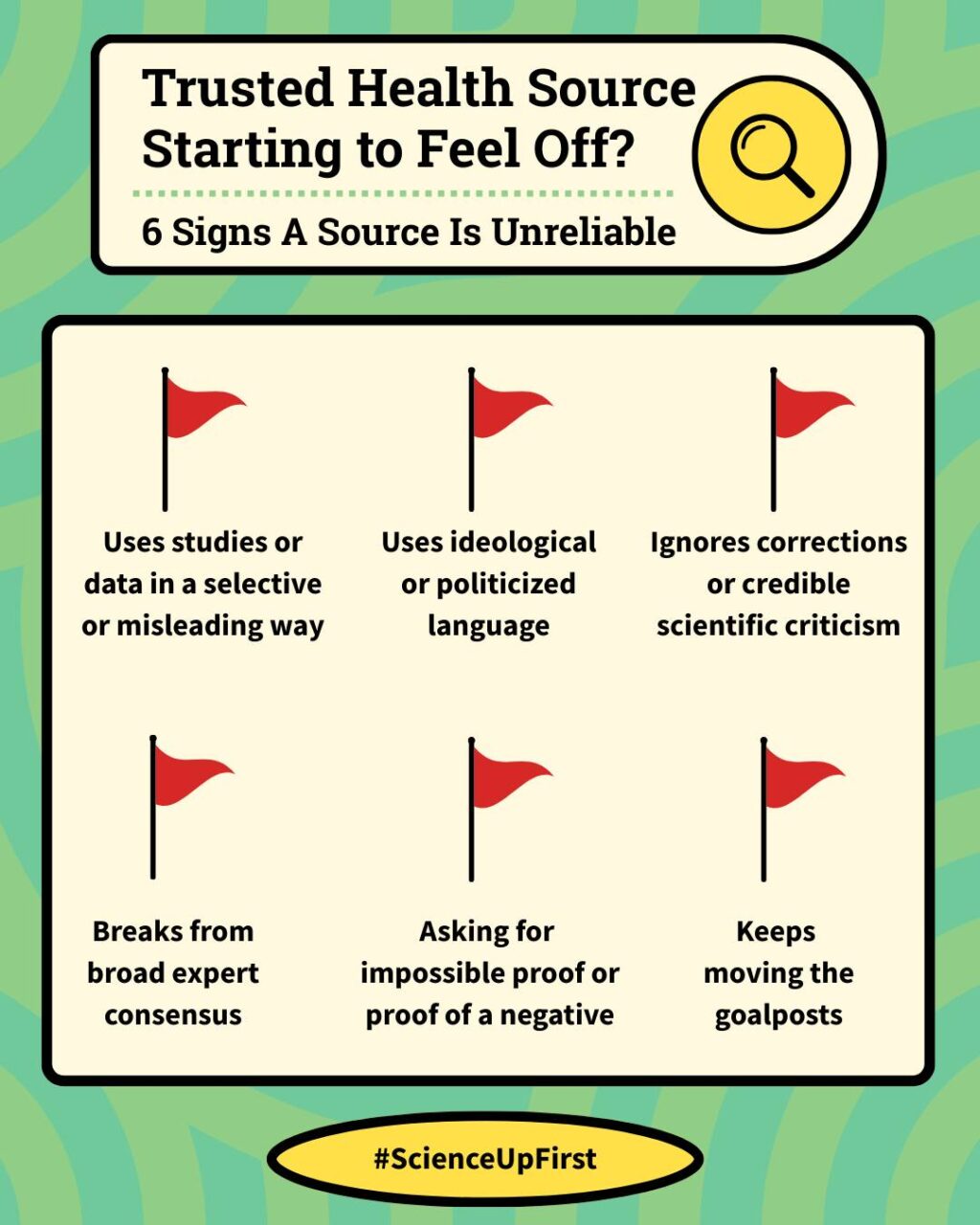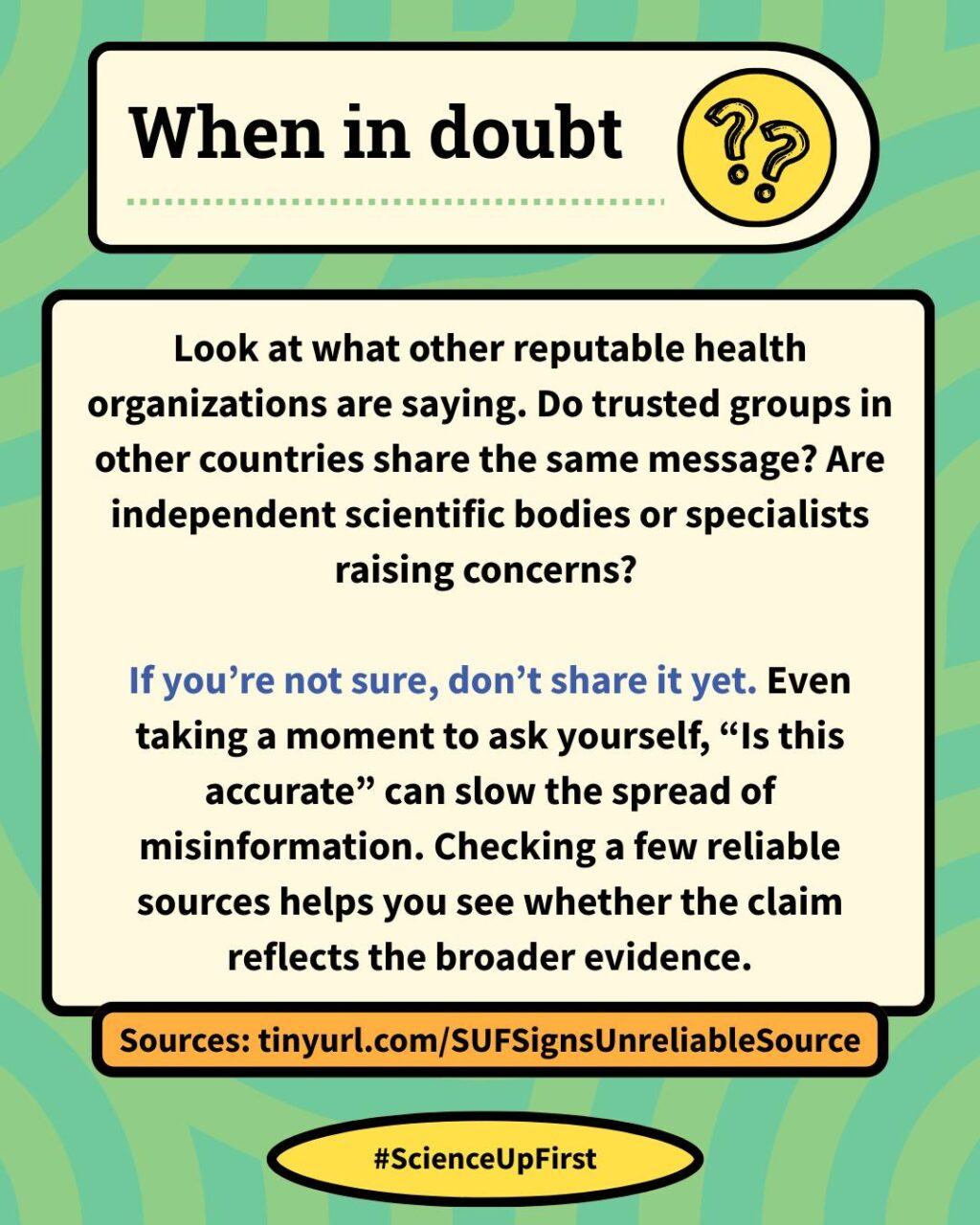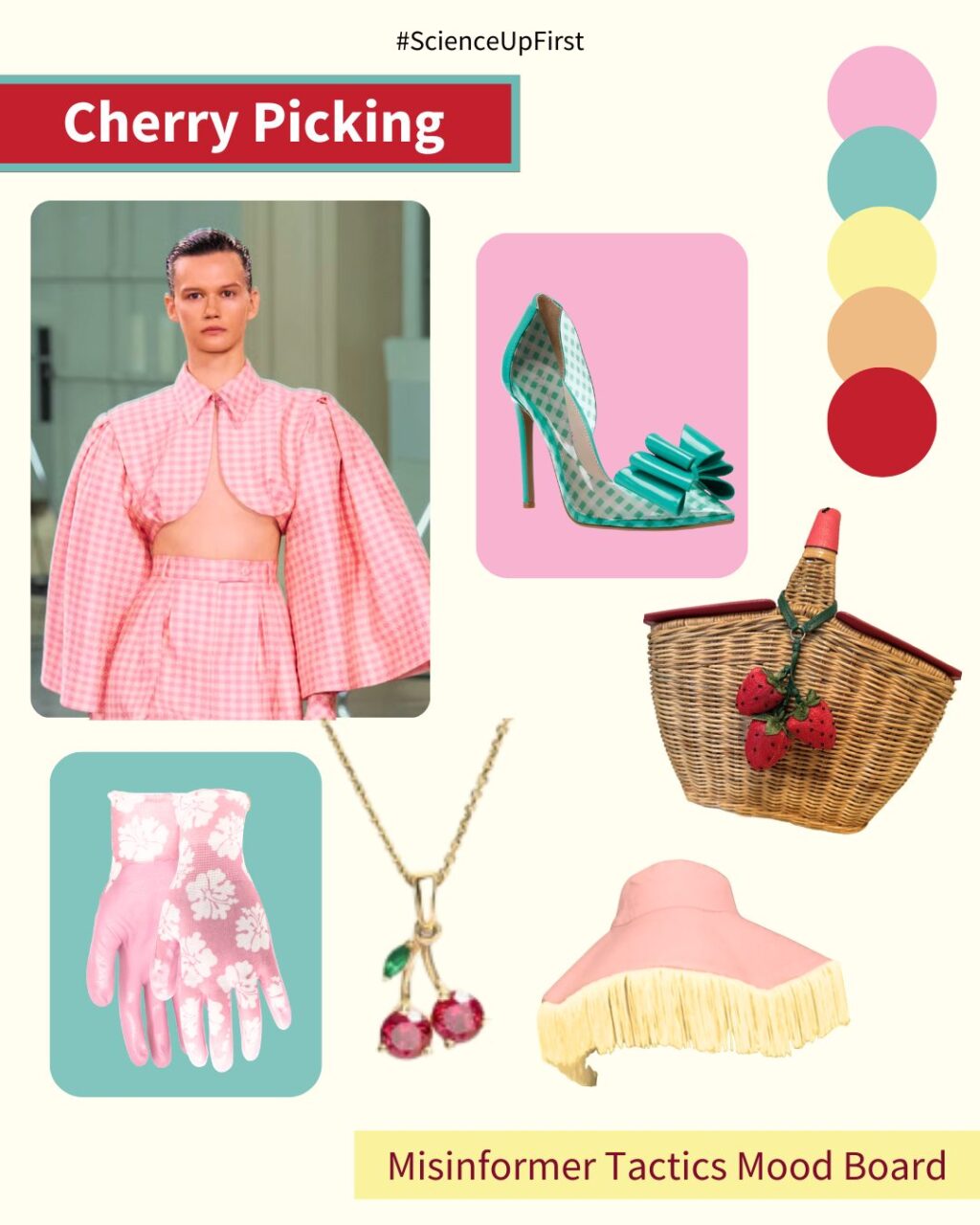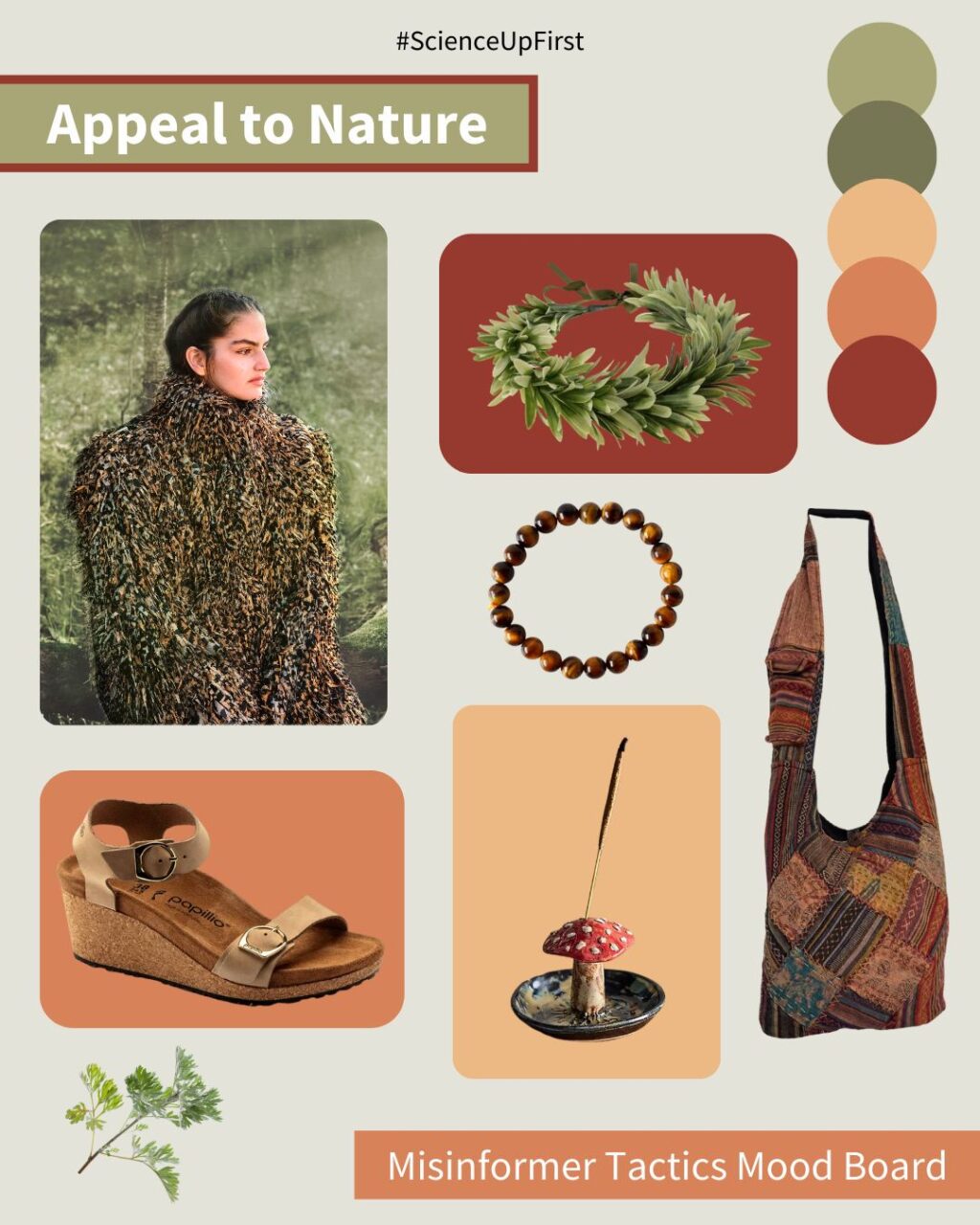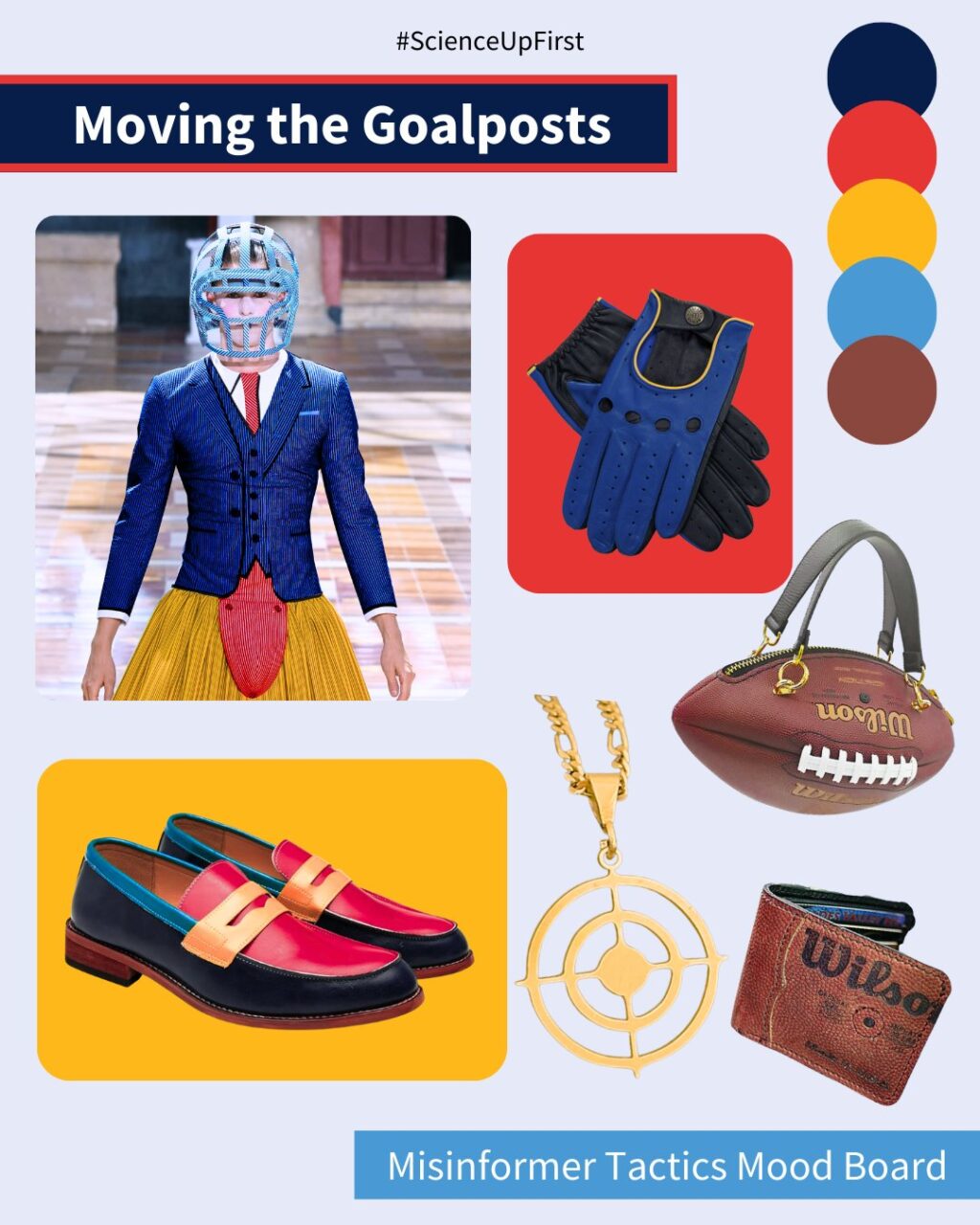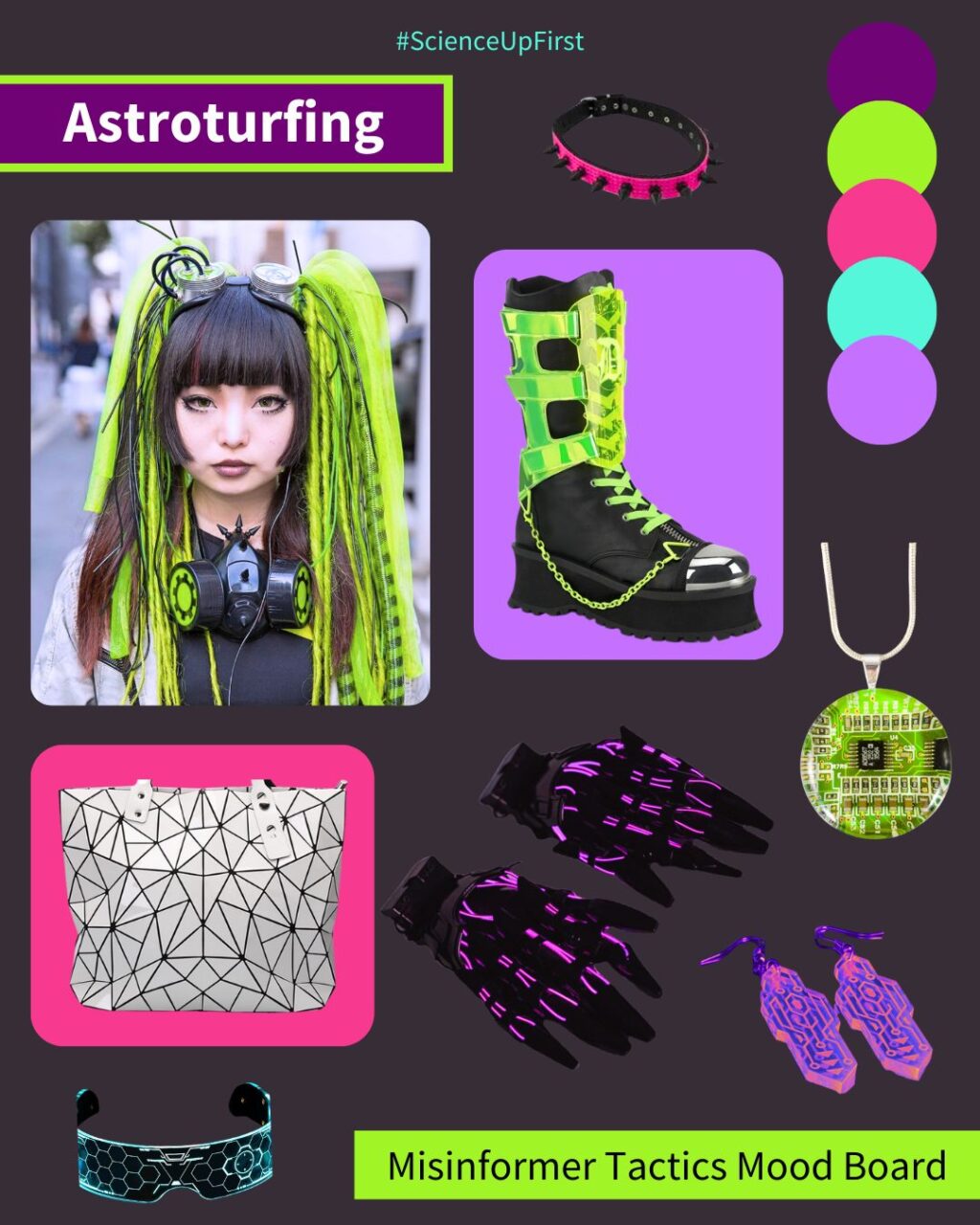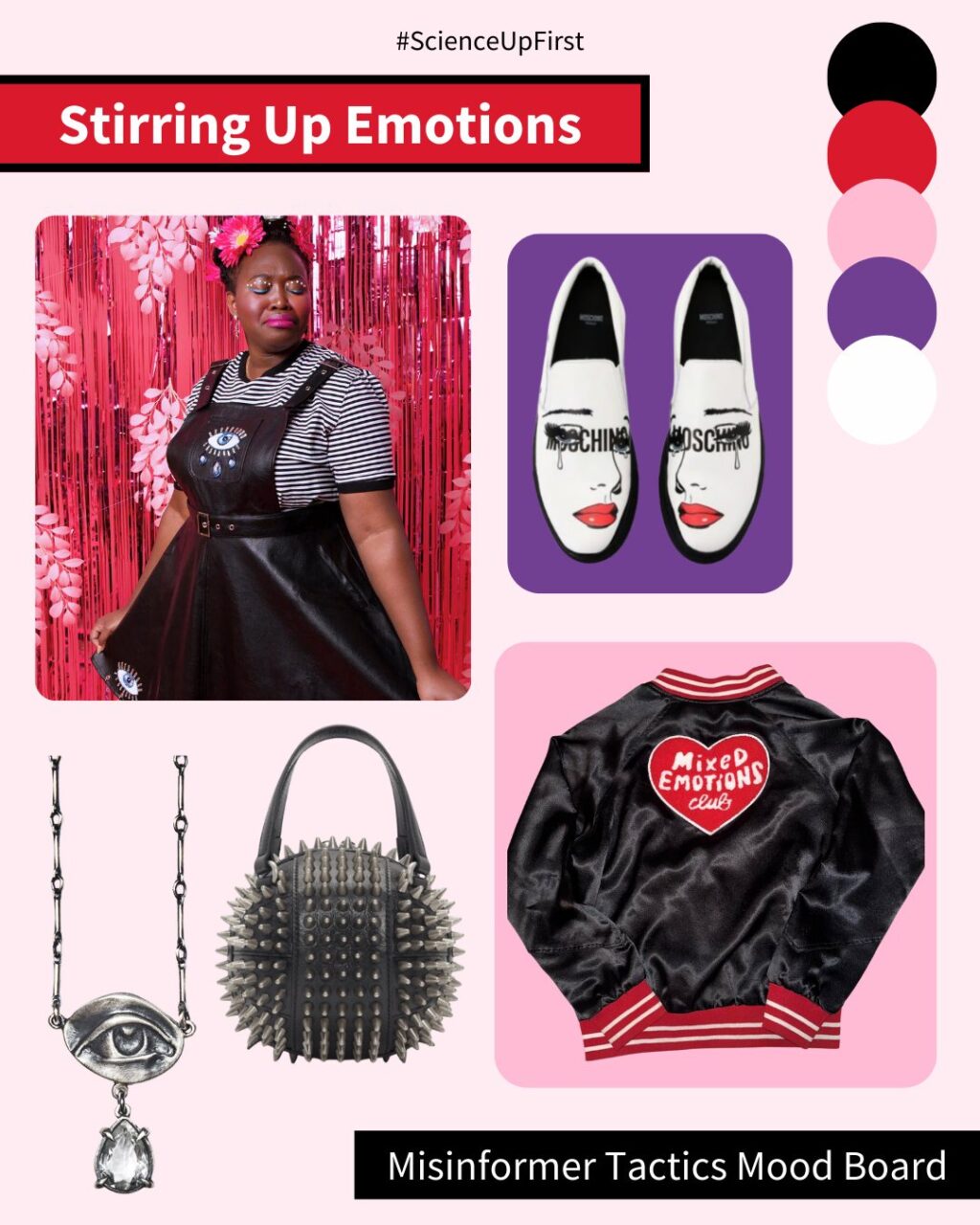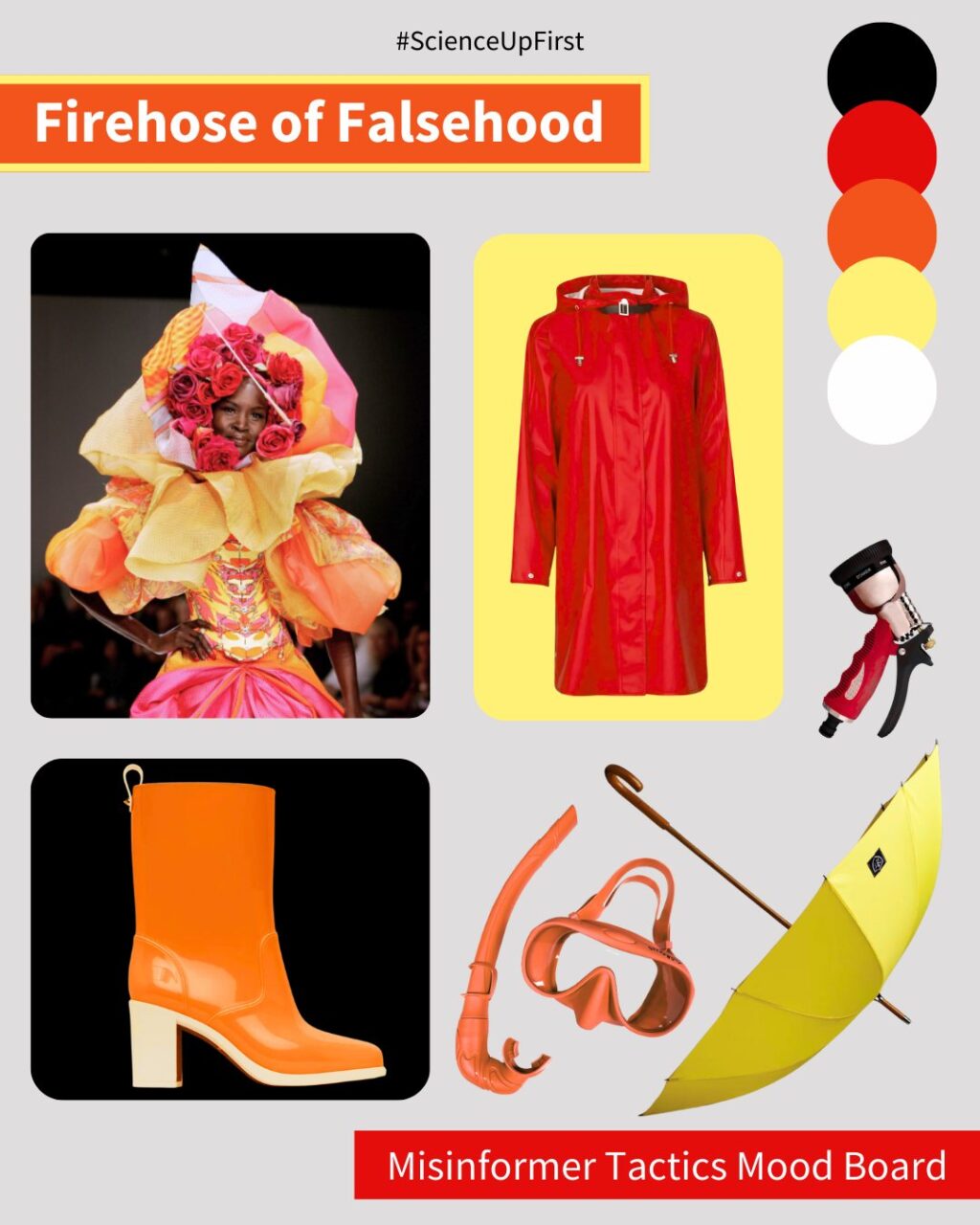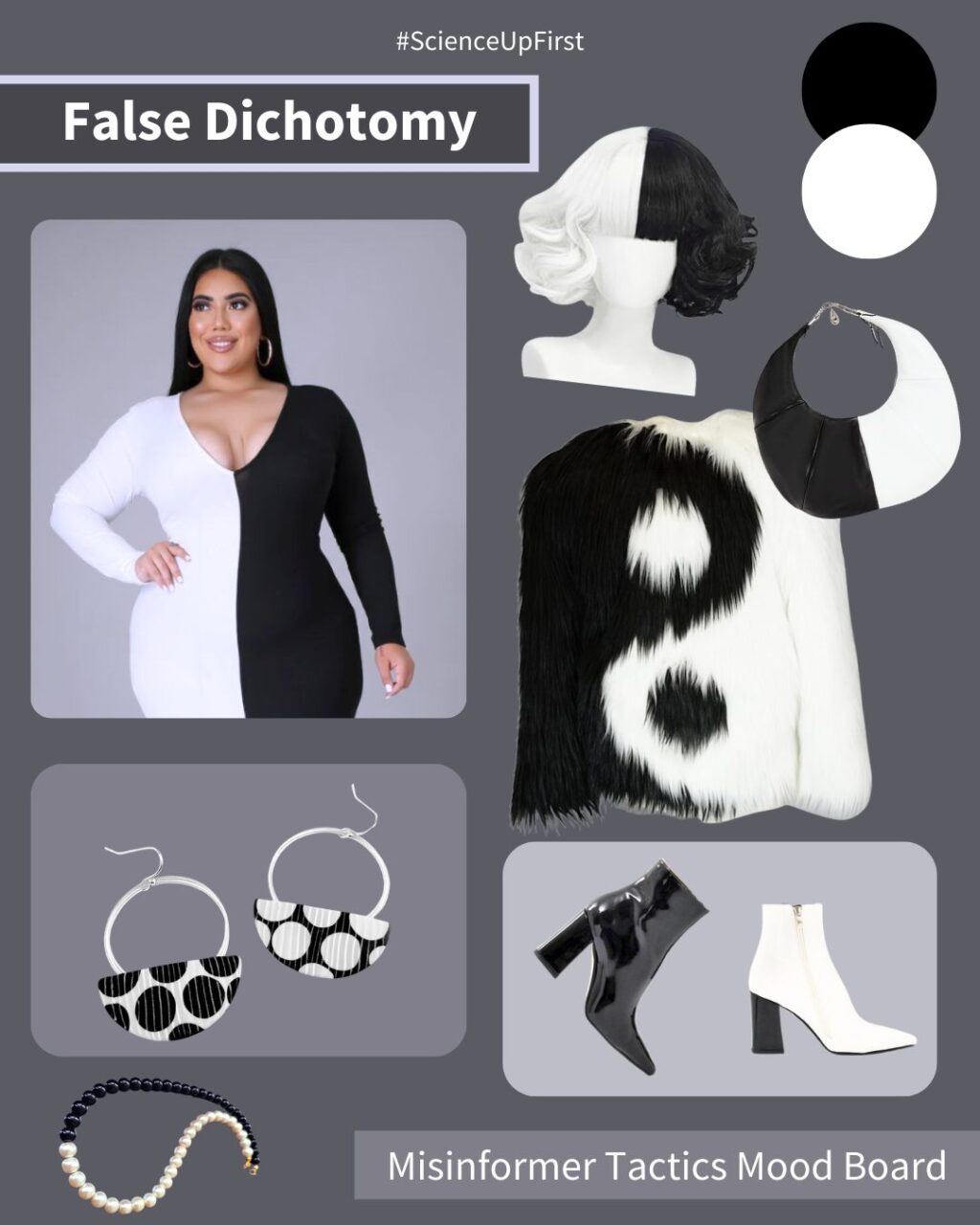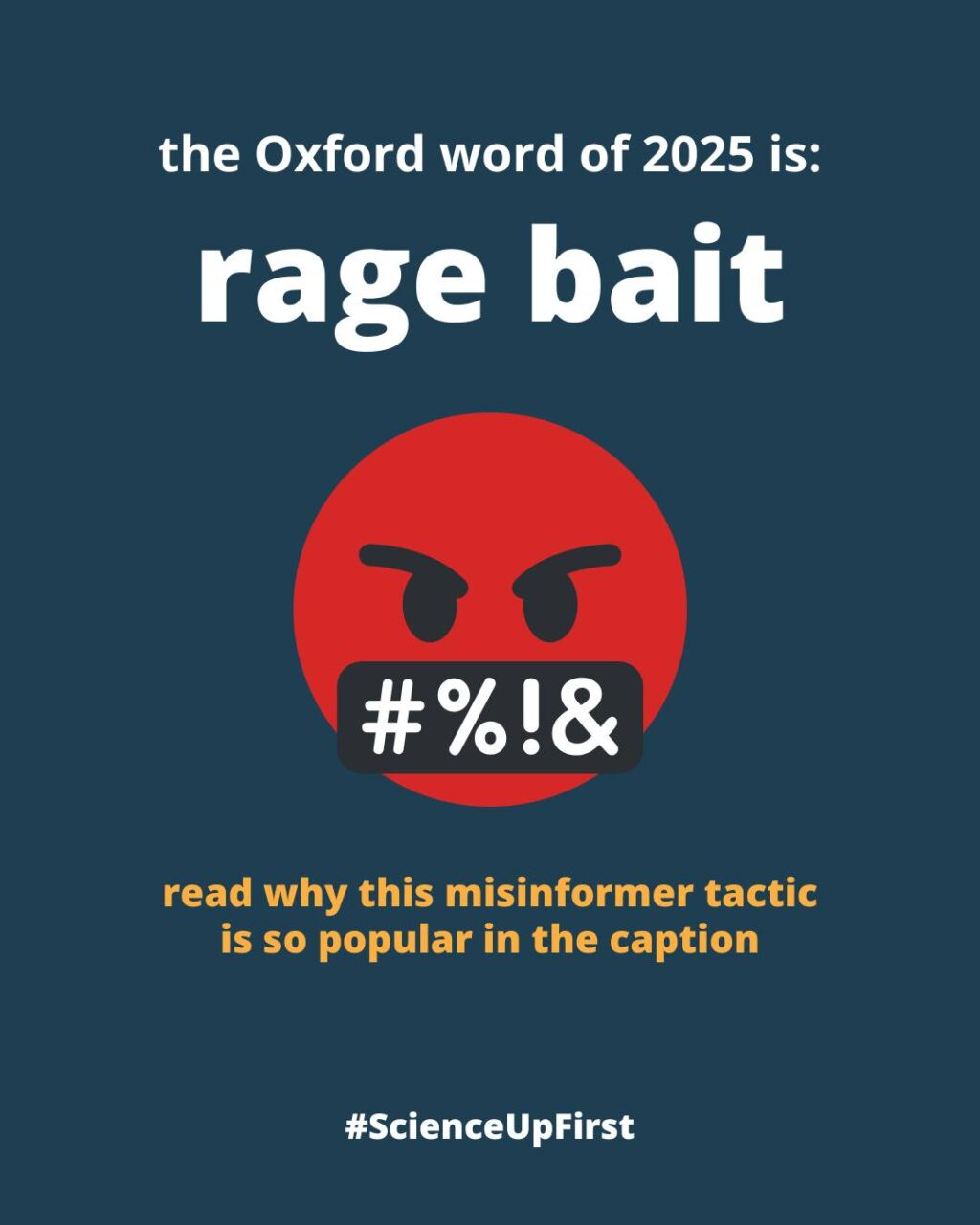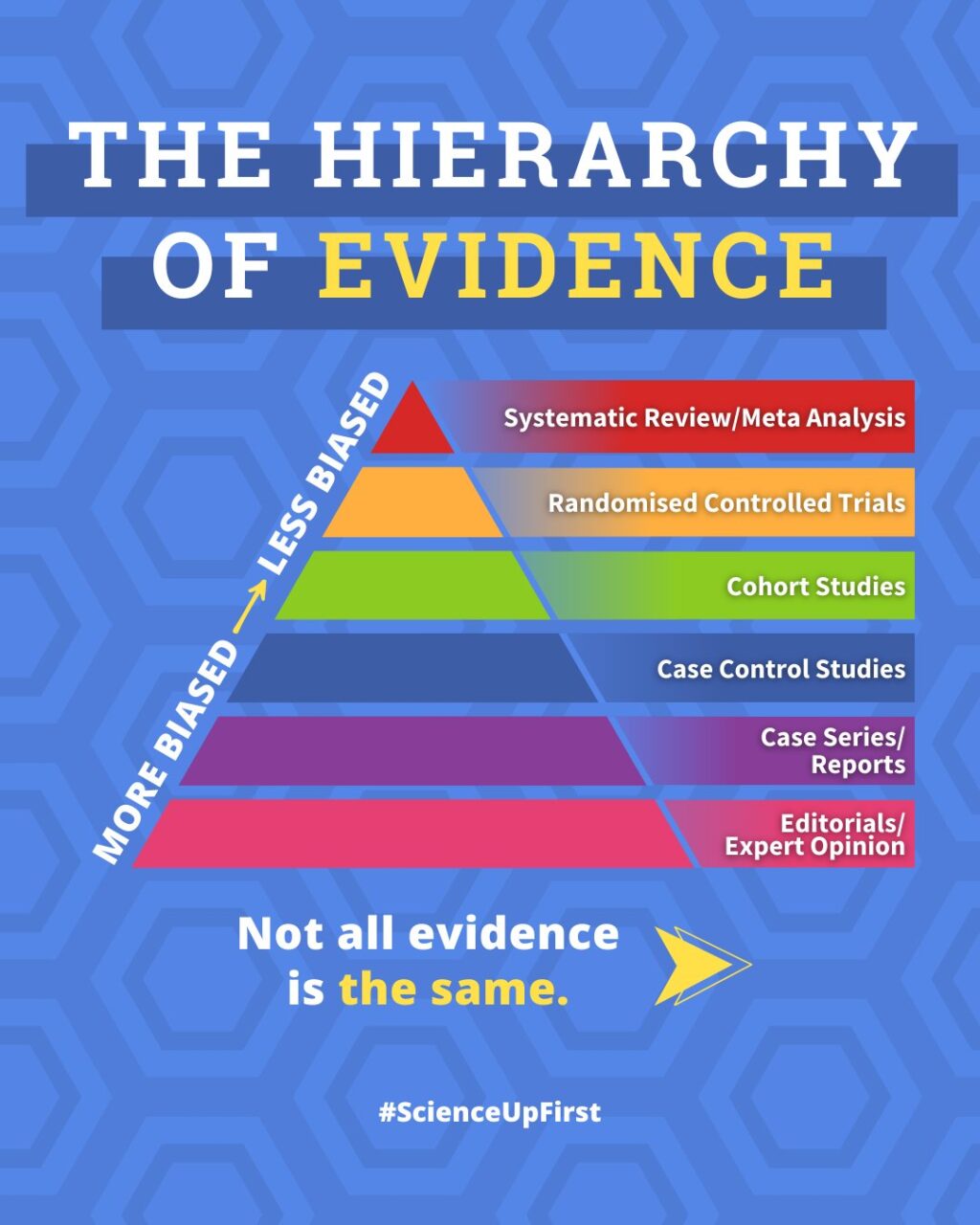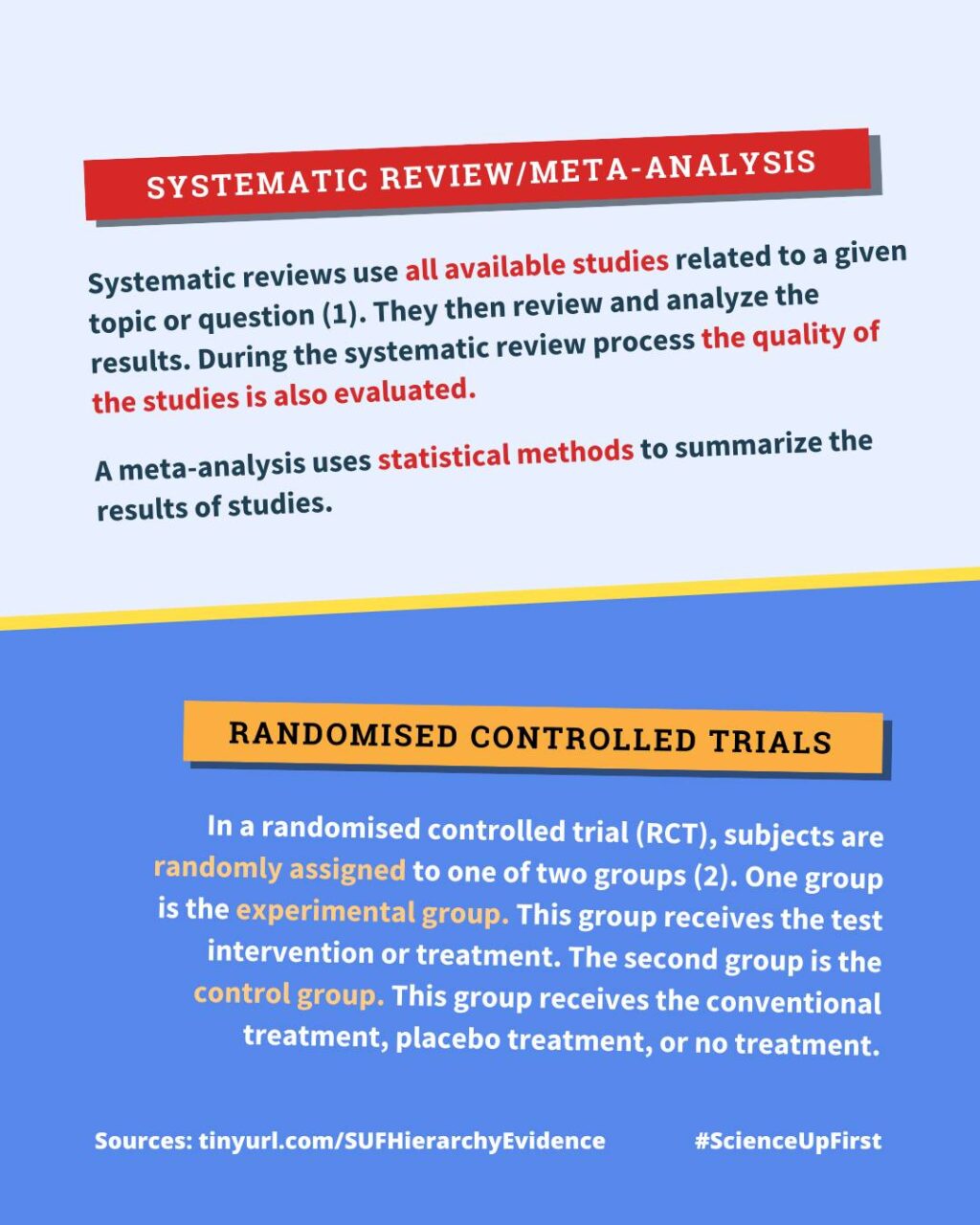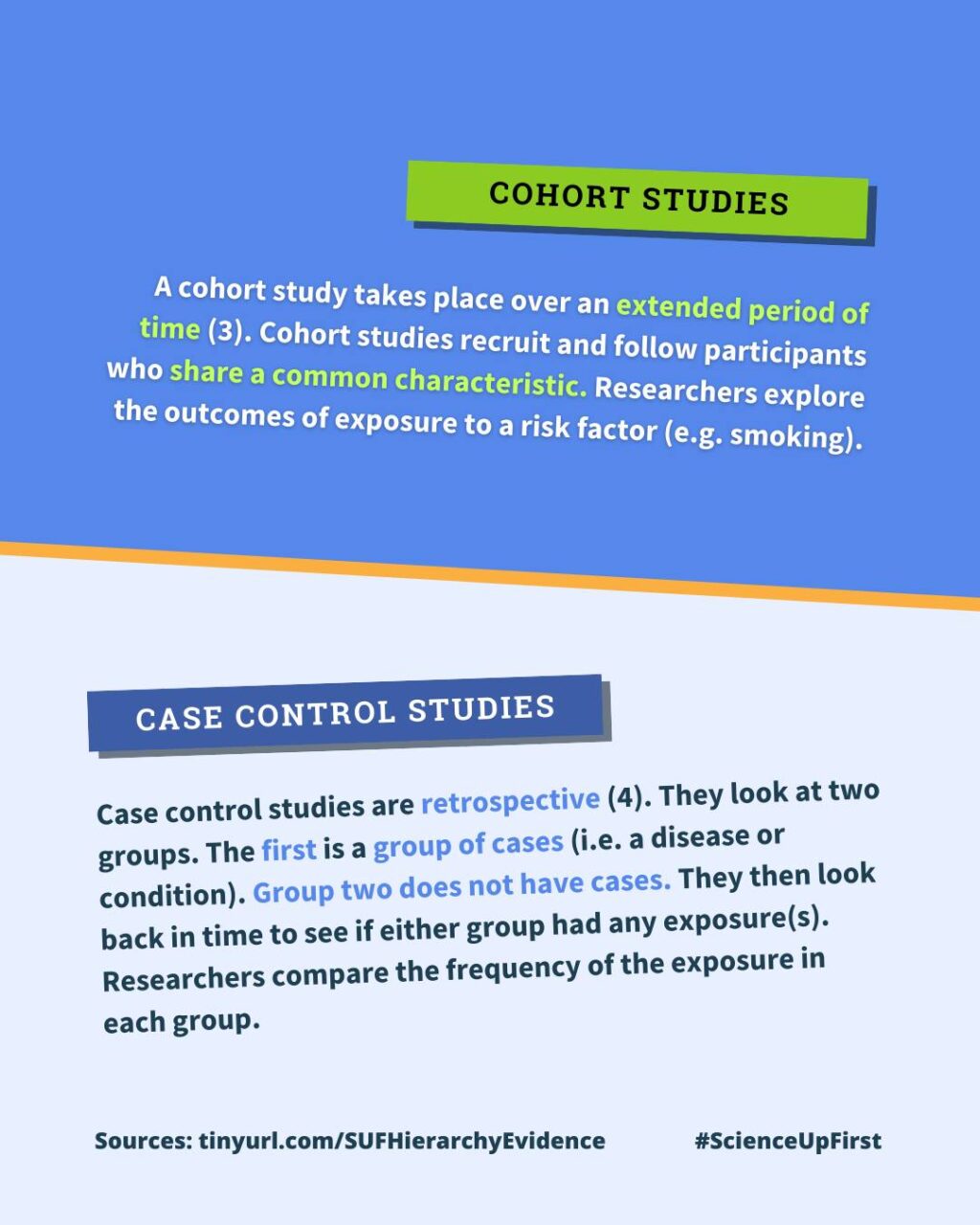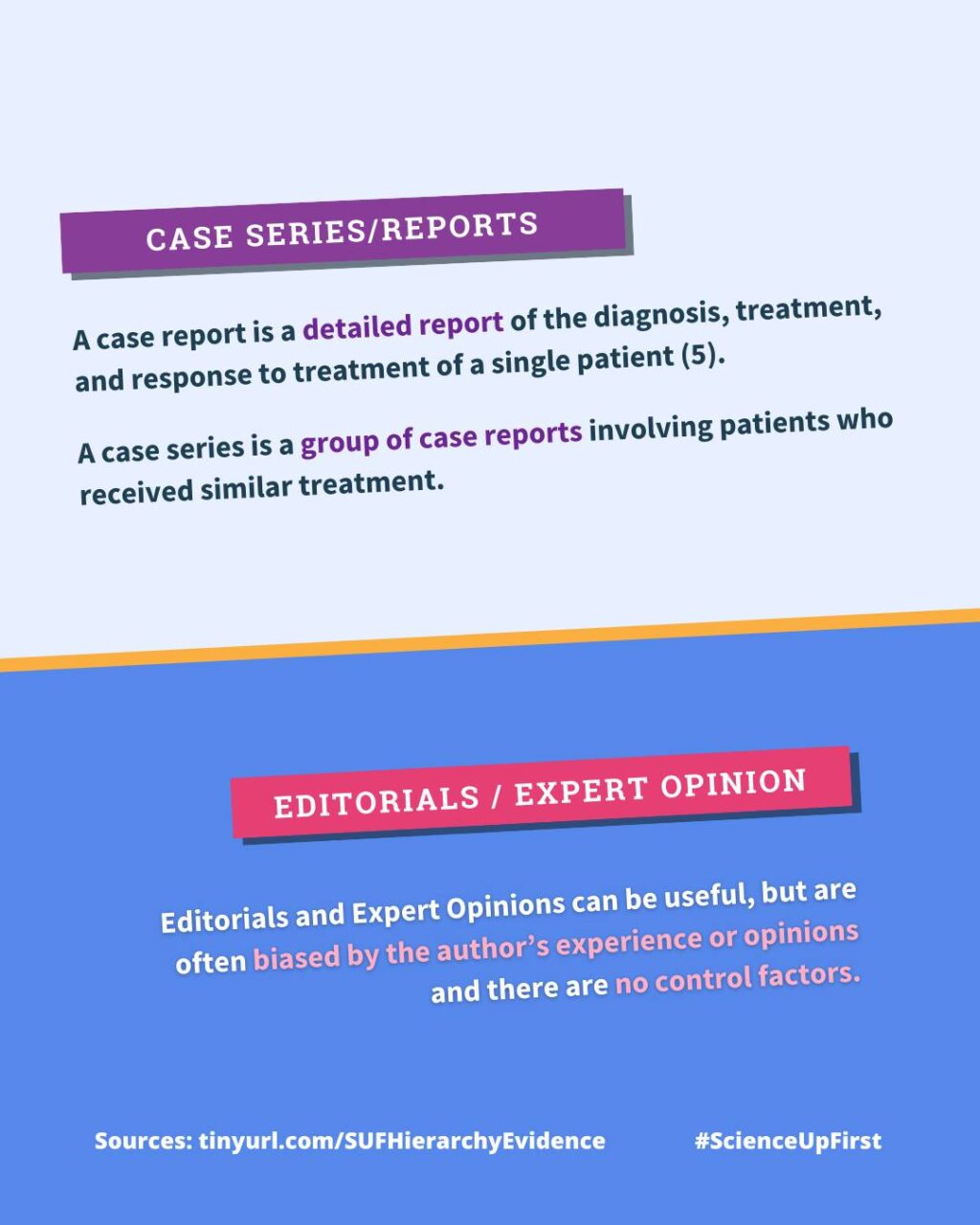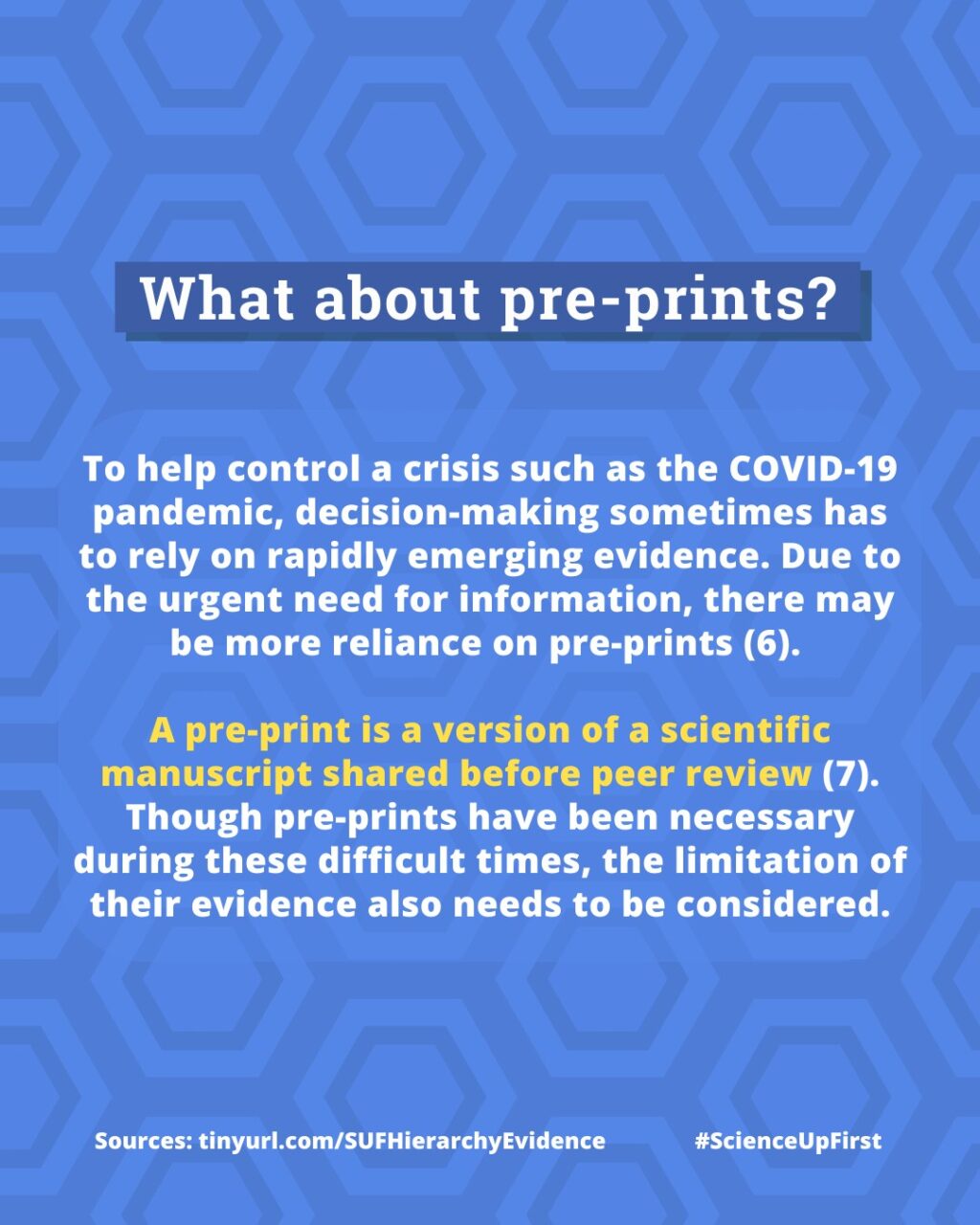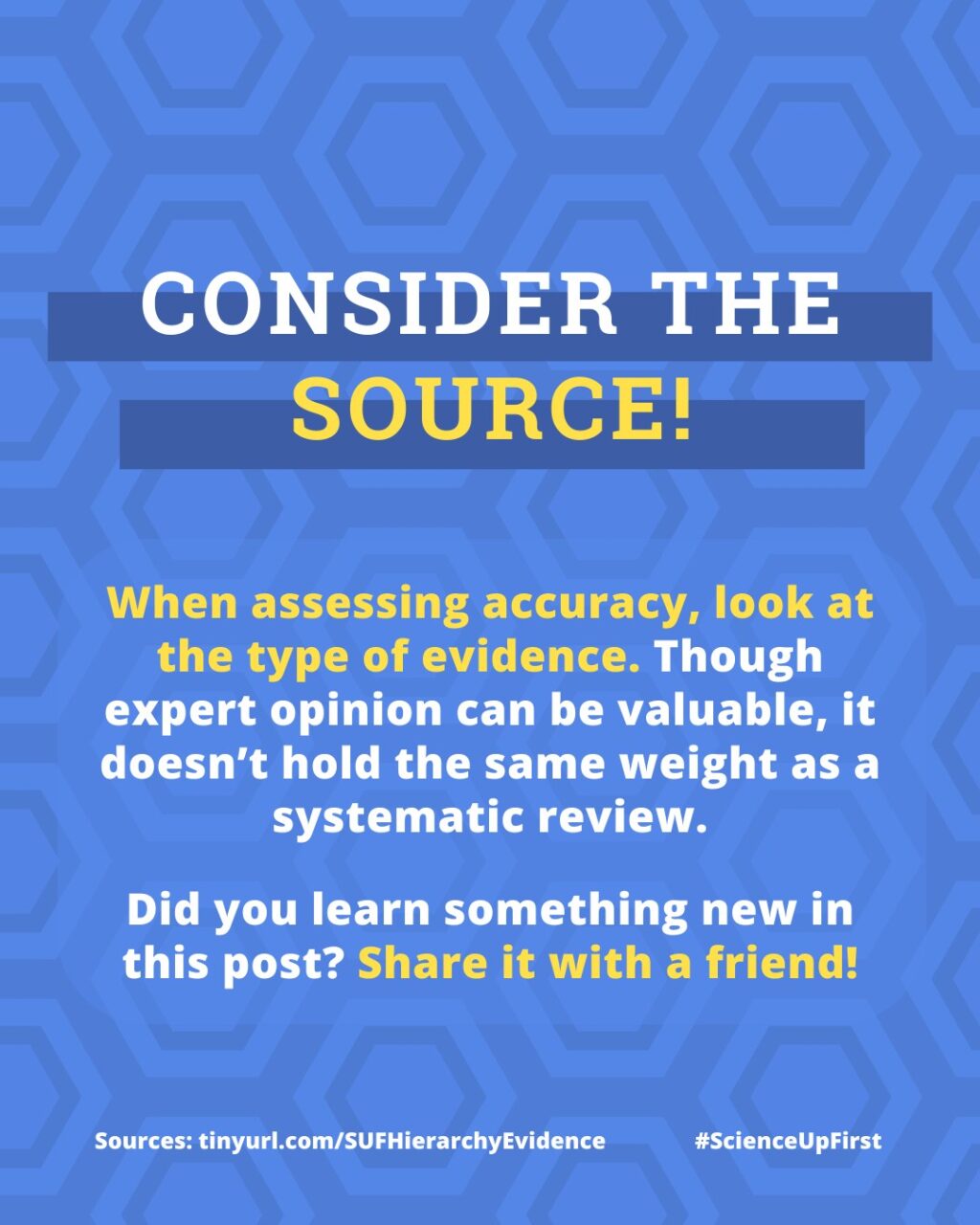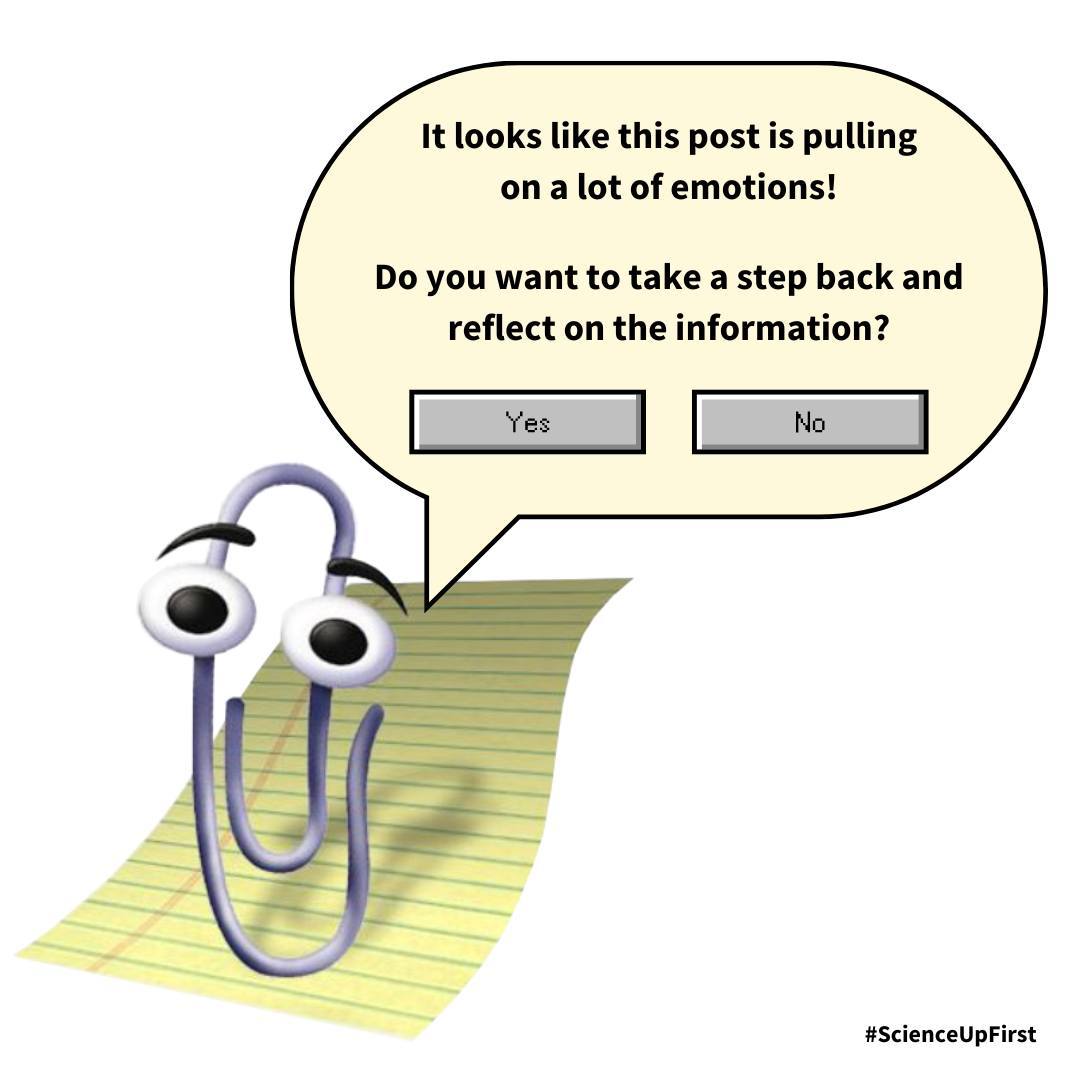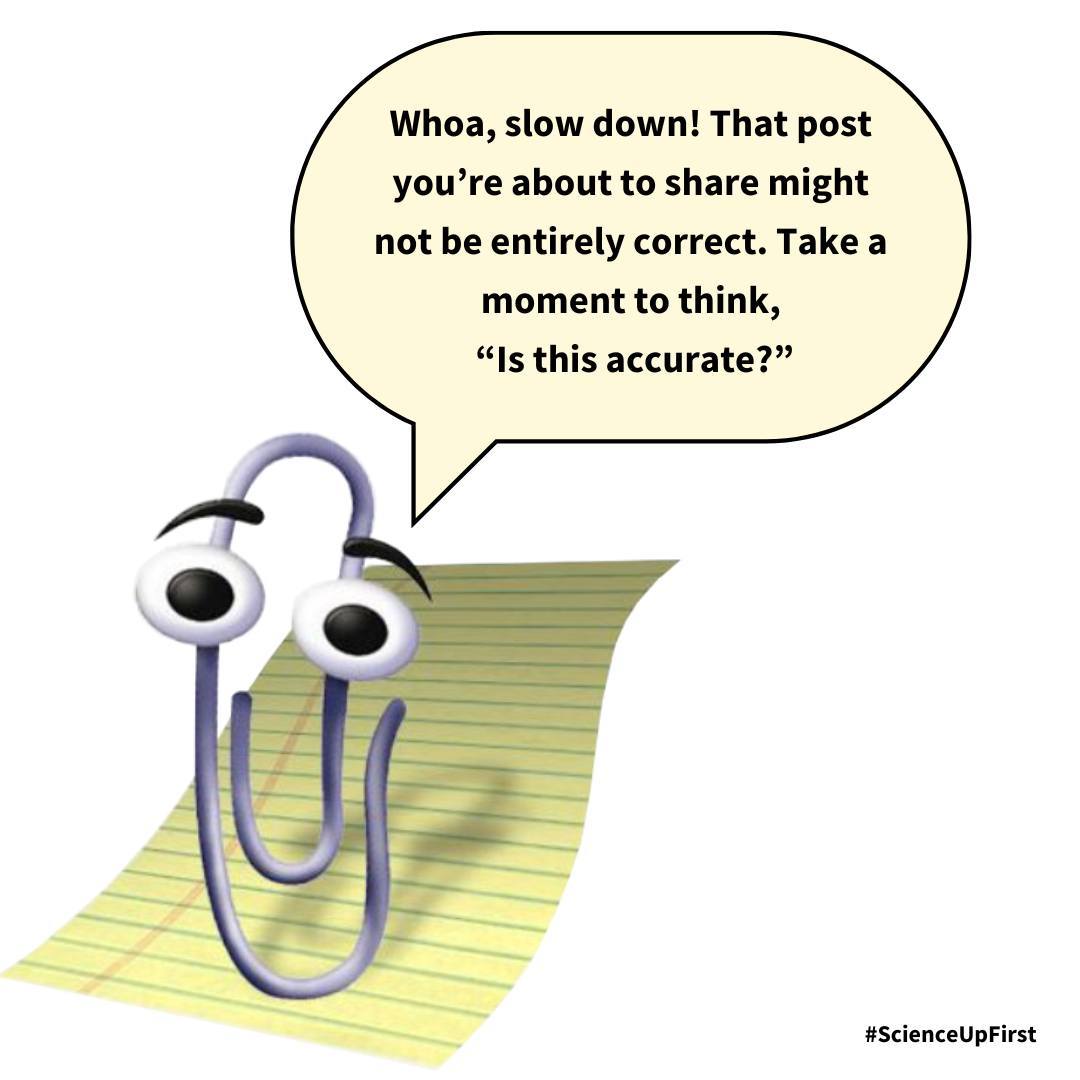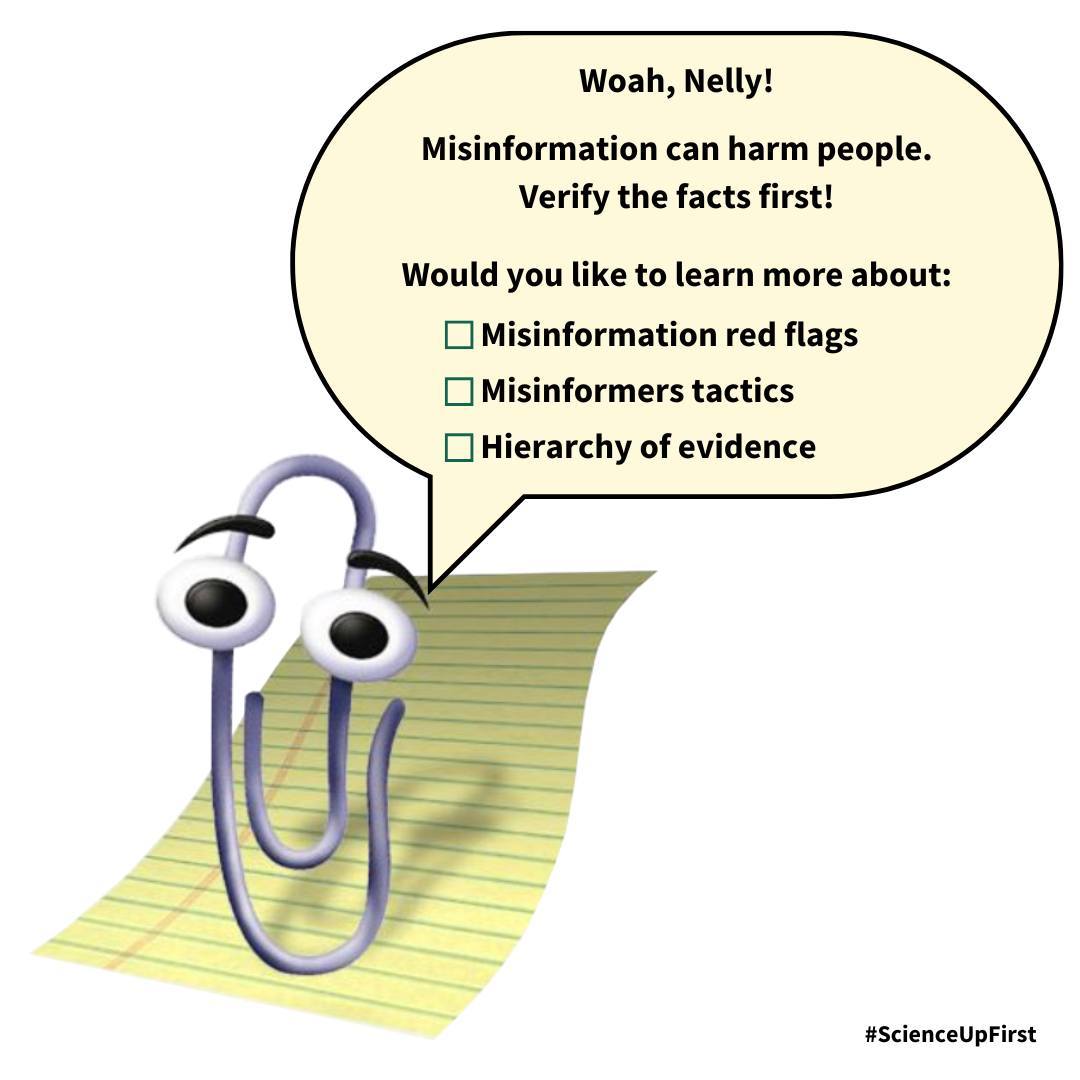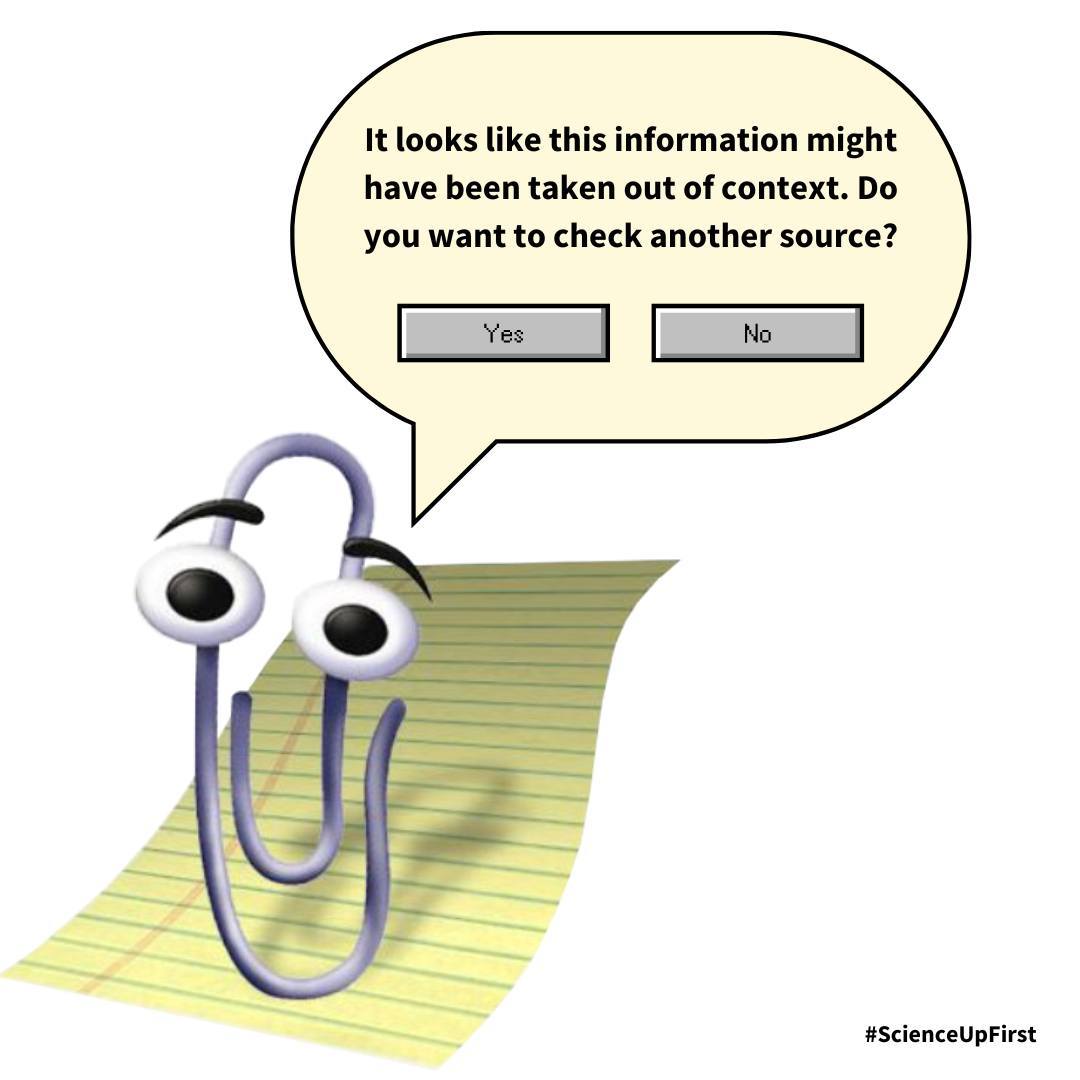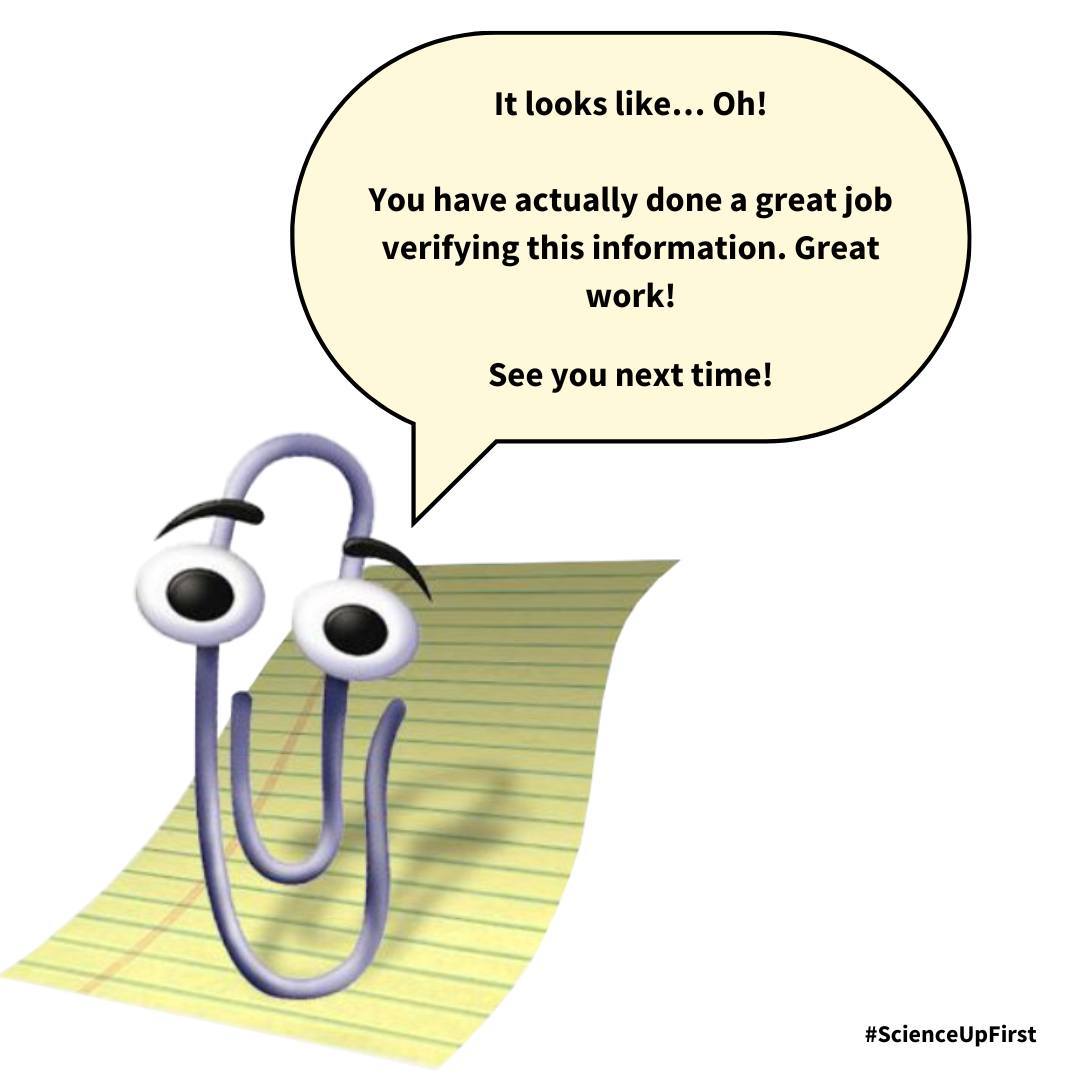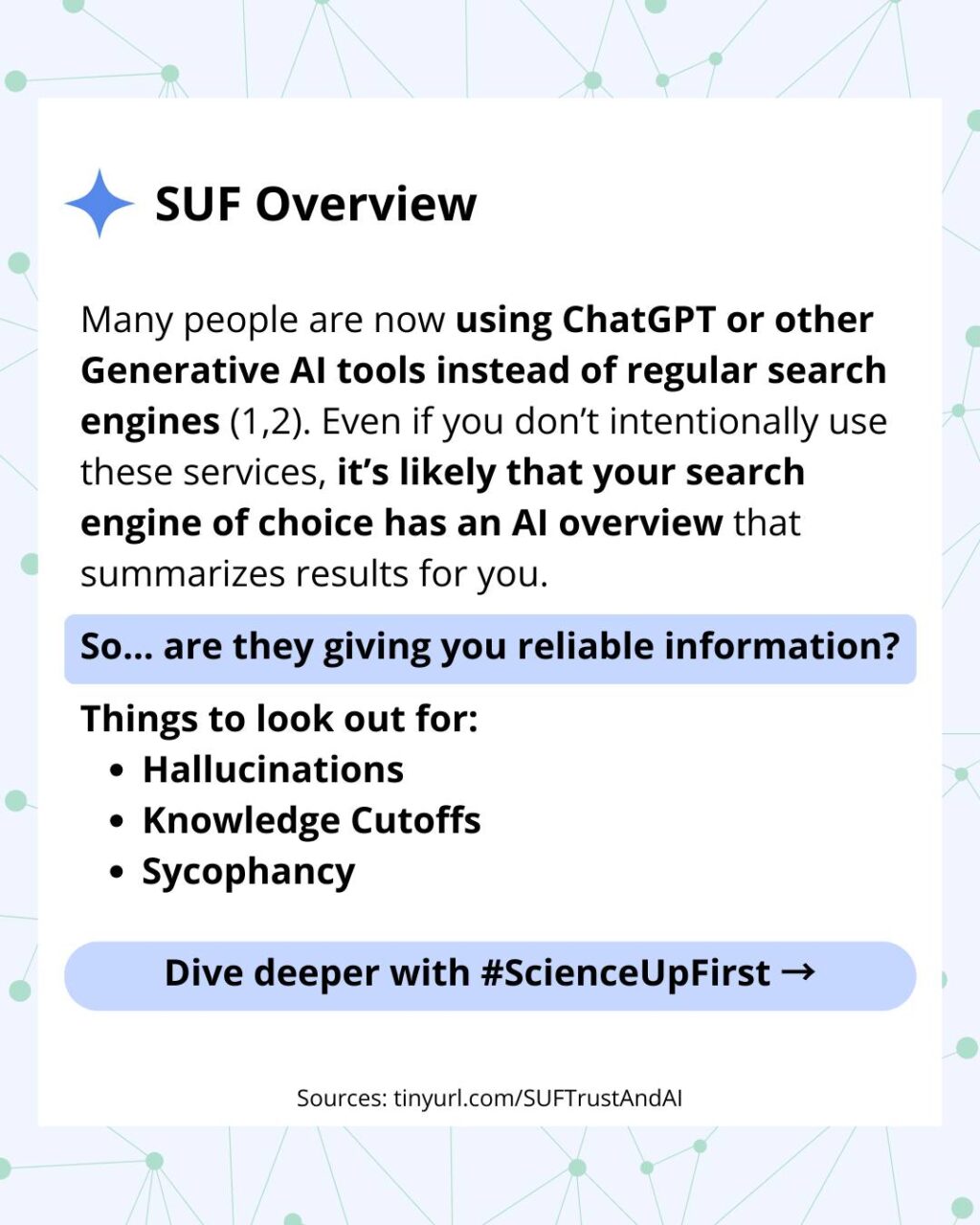
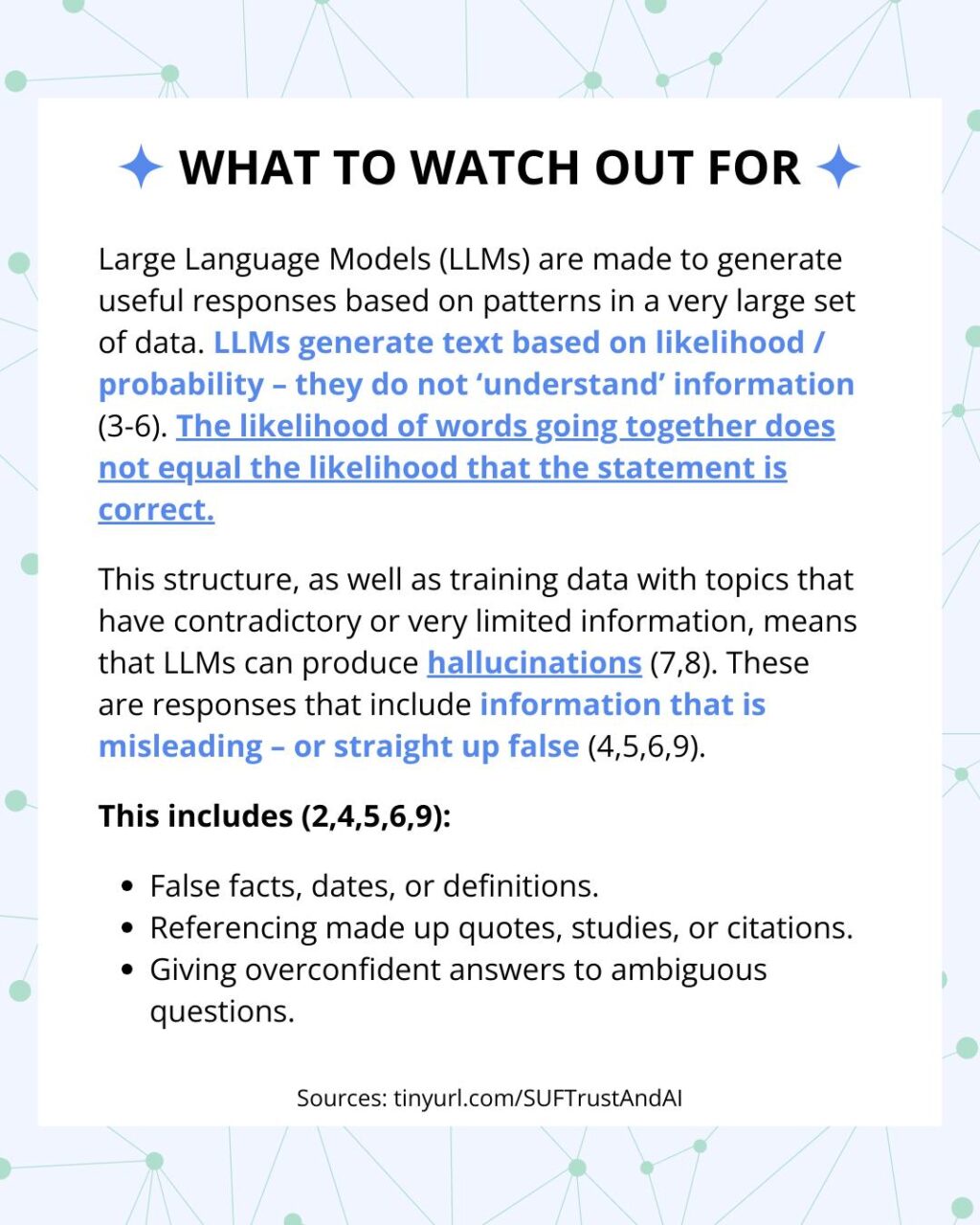
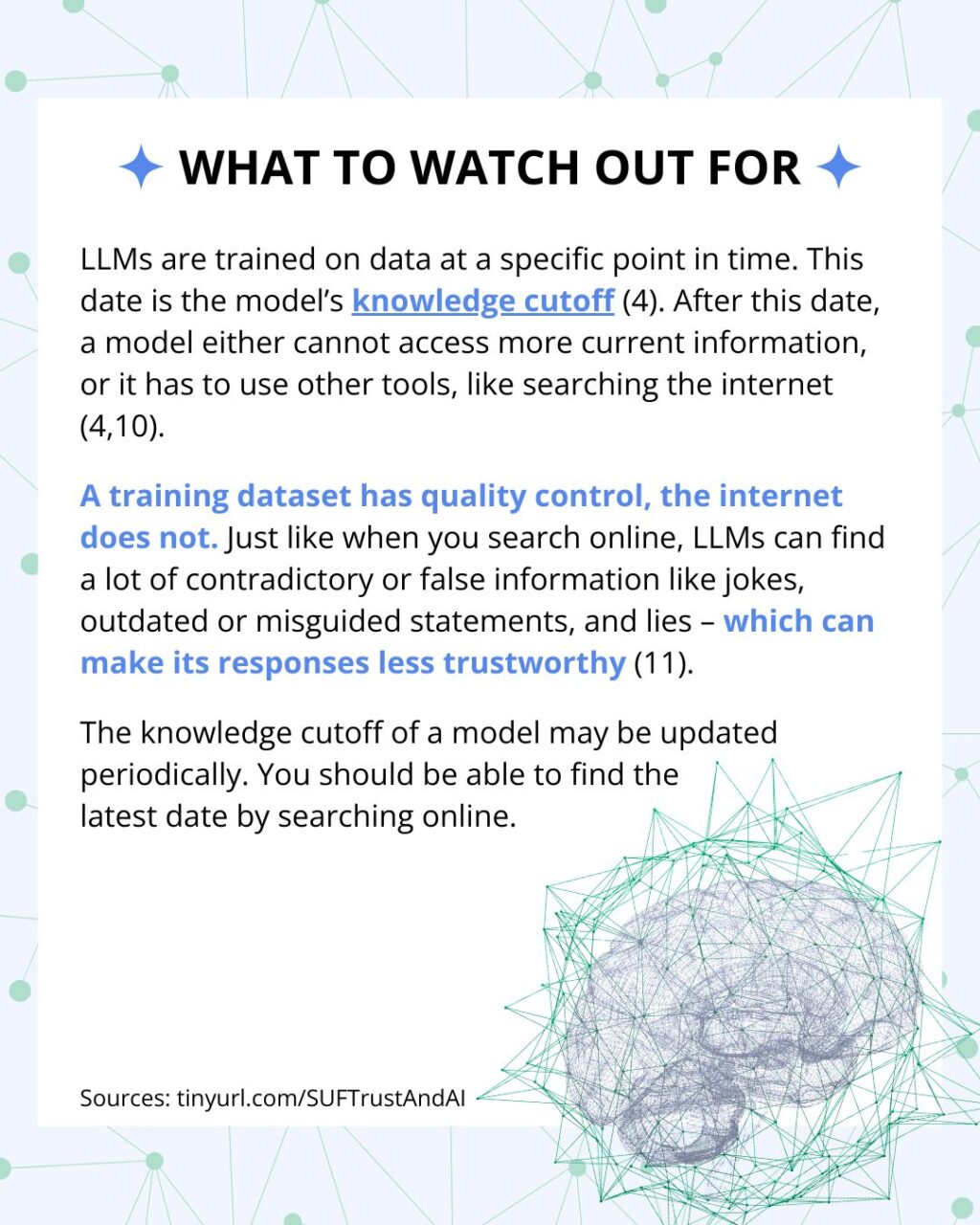
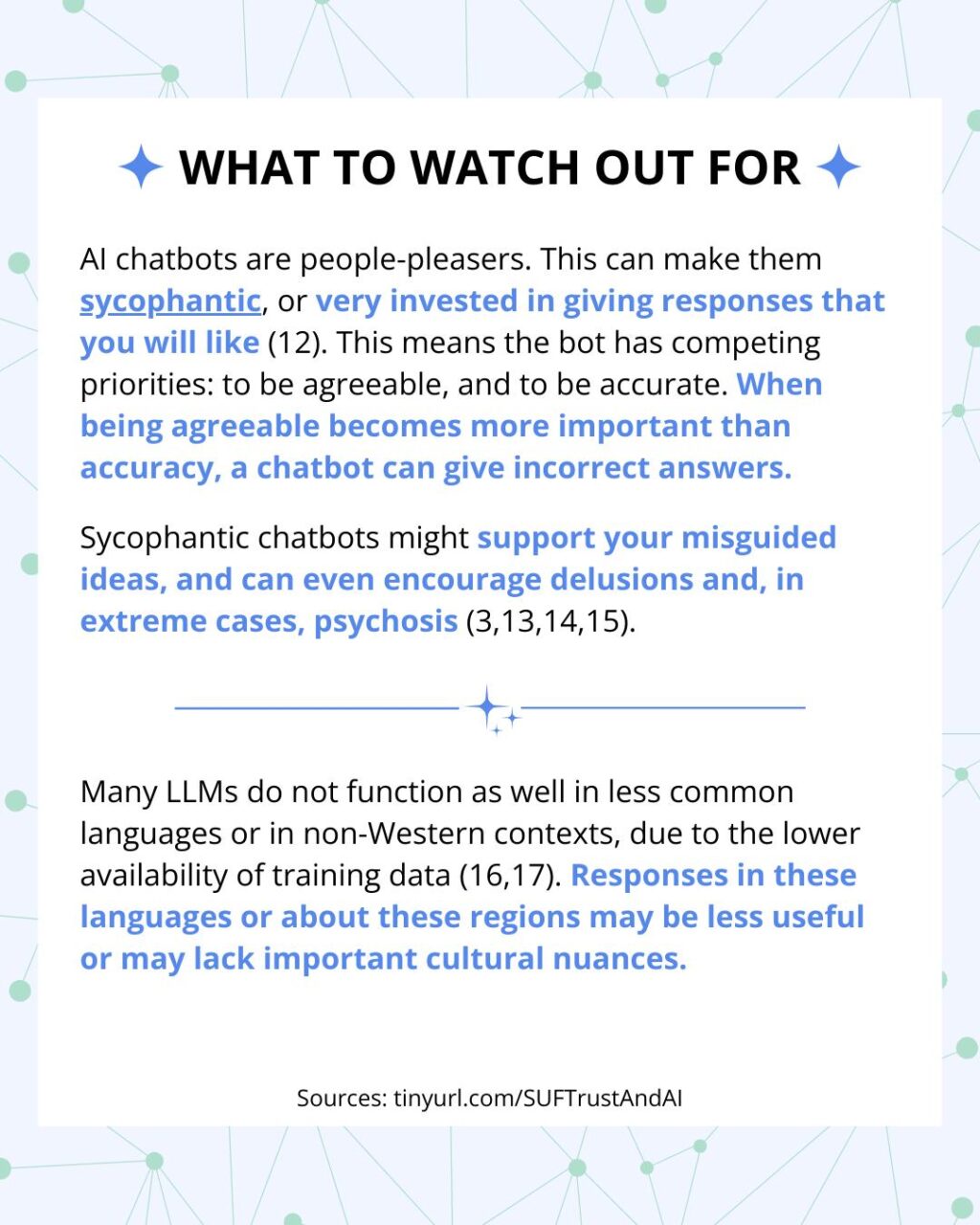
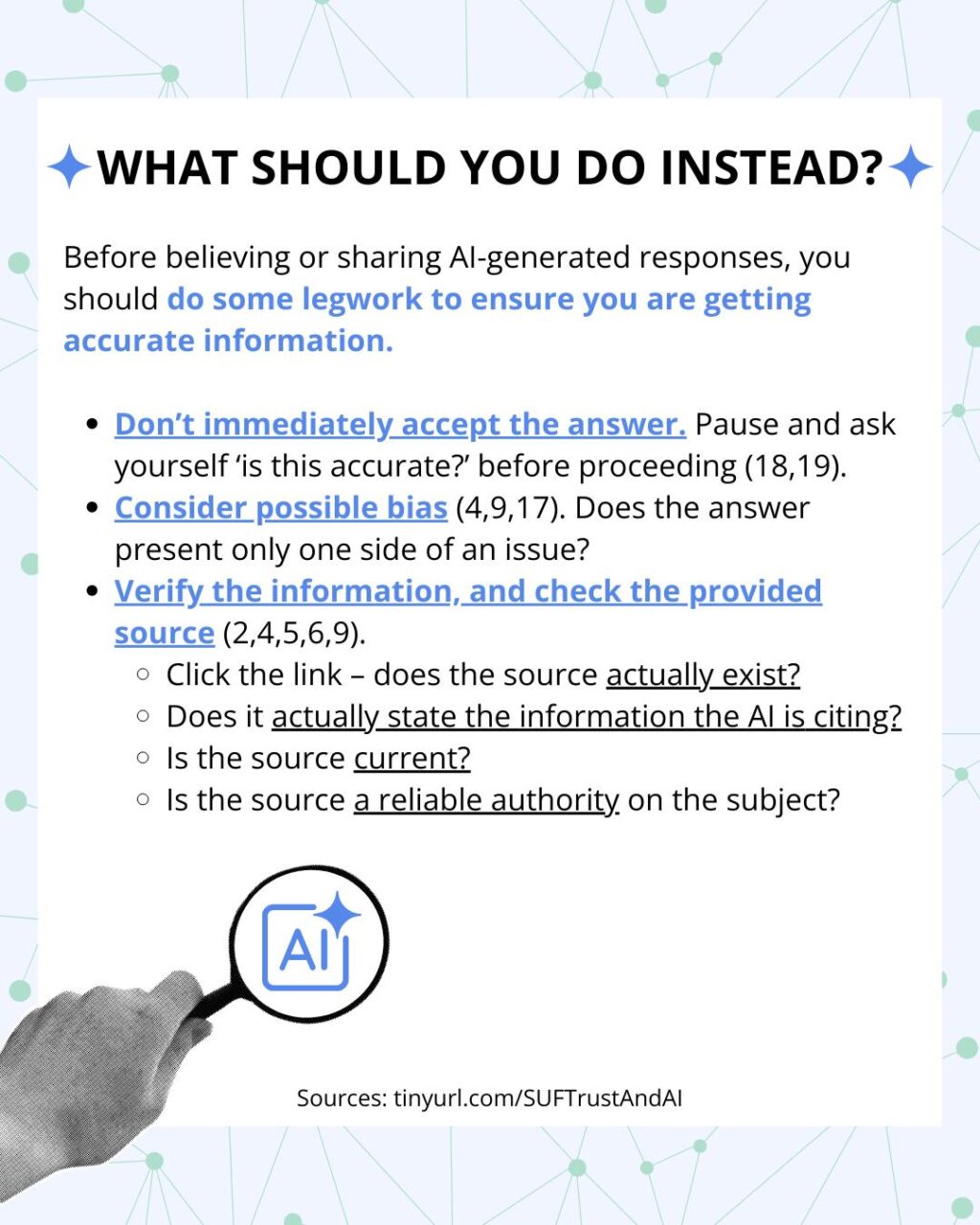
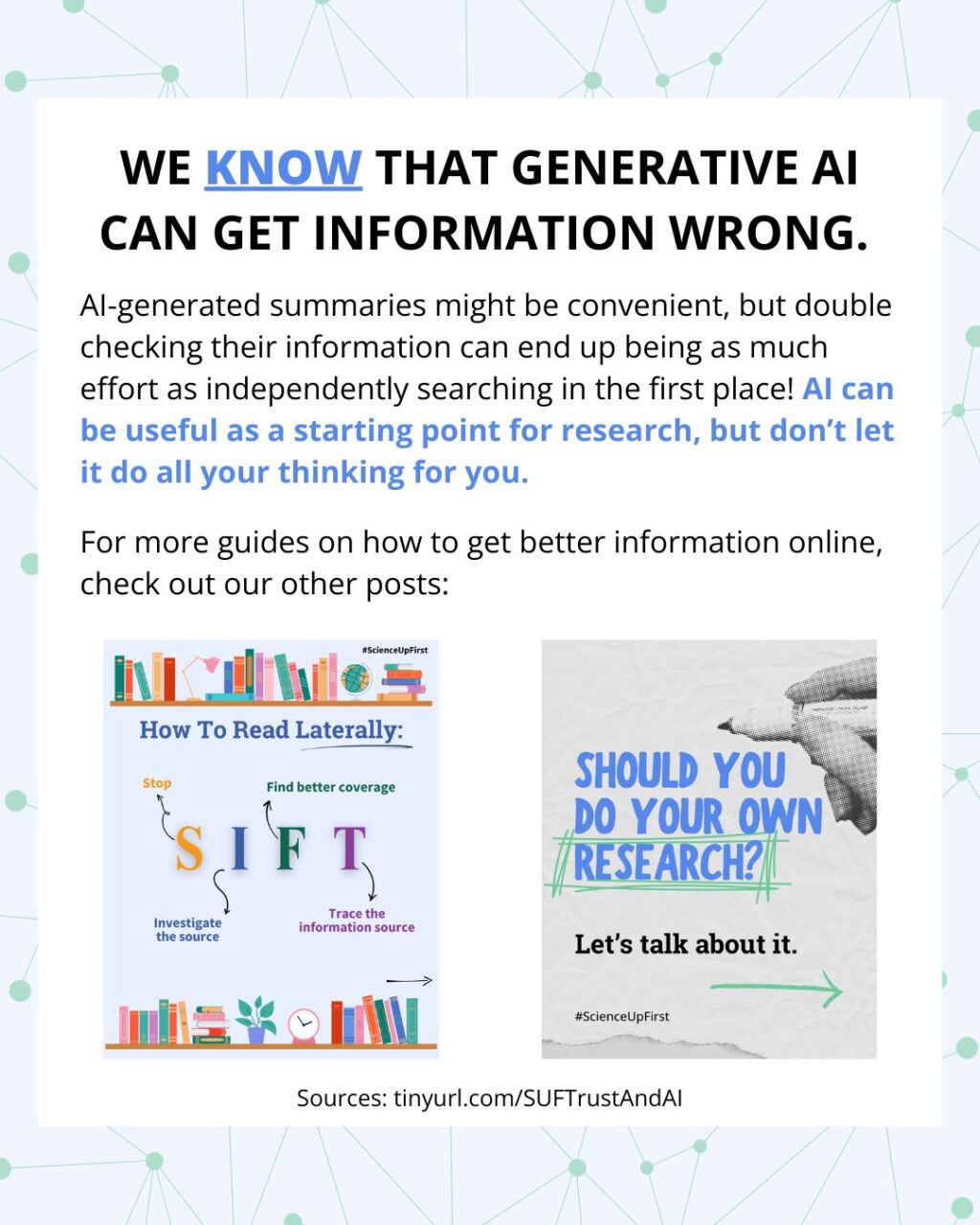
Whether you’re looking for it or not, you are probably coming across AI-generated information when searching online. 🤖
Keep reading for things to look out for and what you should do to make sure the information is accurate. 🔍
Do you have other tips for verifying AI-generated information? Let us know!
- Digital News Report 2025 | Reuters Institute, University of Oxford | 17 June 2025
- Largest study of its kind shows AI assistants misrepresent news content 45% of the time – regardless of language or territory | BBC News | 22 October 2025
- Taxonomy of Risks posed by Language Models | FAccT ’22: Proceedings of the 2022 ACM Conference on Fairness, Accountability, and Transparency | 20 June 2022
- Does ChatGPT tell the truth? | OpenAI | August 2025
- The ChatGPT Fact-Check: exploiting the limitations of generative AI to develop evidence-based reasoning skills in college science courses | Advances in Physiology Education | 18 January 2025
- Using Generative AI | University of Alberta Library | 30 October 2025
- On the Origin of Hallucinations in Conversational Models: Is it the Datasets or the Models? | Proceedings of the 2022 Conference of the North American Chapter of the Association for Computational Linguistics: Human Language Technologies | July 2022
- Calibrated Language Models Must Hallucinate | In Proceedings of the 56th Annual ACM Symposium on Theory of Computing (STOC) 2024 | 20 March 2024
- How to fact-check AI | Microsoft | 19 April 2025
- What is retrieval-augmented generation? | IBM Research | 22 August 2023
- Why Google’s AI Overviews gets things wrong | MIT Technology Review | 31 May 2024
- Sycophancy in GPT-4o: what happened and what we’re doing about it | OpenAI | 29 April 2025
- Truth, Romance and the Divine: How AI Chatbots May Fuel Psychotic Thinking | Scientific American | 24 August 2025
- AI-fuelled delusions are hurting Canadians. Here are some of their stories | CBC News | 17 September 2025
- Will Generative Artificial Intelligence Chatbots Generate Delusions in Individuals Prone to Psychosis? | Schizophrenia Bulletin | 25 August 2023
- Generative AI is already helping fact-checkers. But it’s proving less useful in small languages and outside the West | Reuters Institute for the Study of Journalism | 29 April 2024
- Guide on the use of generative artificial intelligence | Government of Canada | 3 June 2025
- Understanding and combatting misinformation across 16 countries on six continents | Nature Human Behaviour | 29 June 2023
- Shifting attention to accuracy can reduce misinformation online | Nature | 17 March 2021
Share our original Bluesky Post!
View our original Instagram Post!

